
TechJunkie Expert Recommendations
![35 Fun Mobile Games You Can Play Without WiFi [August 2020]](https://www.techjunkie.com/wp-content/uploads/2017/07/bannerpicture20games-1280x720.jpg)
Over the last several years, competition between major carriers in the US have finally allowed for consumers to sign up for unlimited data plans for smartphones again. Users who need the additional data can rely on the plans offered directly from their carriers, instead of having to worry about their carriers charging overage fees that end in an unexpectedly expensive bill at the end of the month. While we appreciate the additional data plans offered by the country’s top mobile carriers, they still retain two major problems. First, they’re rather expensive and still carry throttling that can, unfortunately, limit your internet usage speeds if you cross over a certain percentile of data used nationwide. Second, and perhaps more importantly, all the data in the world can’t fix areas where you lose out on cellular or WiFi connectivity.
While our massive appetite for mobile data is continuing to grow all the time, not everyone has the luxury of an unlimited data plan or a WiFi network available to play on. Whether you’re on a long flight, taking the subway to work, or simply can’t access your network from your current location, you might want to be on the lookout for some excellent mobile games you can play while on the run, Whether on your commute, traveling to a faraway vacation, or bored while waiting in line at your local coffee shop, these games for both iOS and Android offer something a little special for players looking to waste their time away.
From casual gaming experiences to something with a bit more depth to sink your teeth into, this list of the thirty-five best mobile games available without an internet connection is sure to satisfy your thirst for a rewarding single-player offline experience.
Compatible With




We’re all probably familiar with the Angry Birds game series, originally released for iOS back in 2009. The game was popular enough to launch an entire series of merchandise, spin-off games, television shorts, and even two animated films. Strangely, despite the licensed spin-offs and full-on console launches of the original game, Angry Birds didn’t see a complete sequel released until 2015, with Angry Birds 2 function as a direct continuation of the original game. Though the game functions quite similarly to the original Angry Birds game from last decade, the series has been revitalized here with new mechanics and reworked controls that make the game feel better than ever. As with the original Angry Birds and most of its assorted spin-offs, you play the game by launching small birds at your target, a series of platforms built holding pigs up that you need to demolish. Using a slingshot, you shoot your birds—each with their own special powers—at the base, allowing you to crush the pigs in as few turns as you can without losing lives. Angry Birds 2 changes a few things about this strategy. First, the biggest change involves how you fire the birds, to begin with. Instead of each bird being offered in a very specific order on every single level, you gain a deck of the birds, allowing you to shoot the birds in whatever order you’d like to crush your enemy pigs. You can raise your score and fill your “Destruct-O-Meter” to gain access to new special cards within the level and do ultimate damage to your opponents. 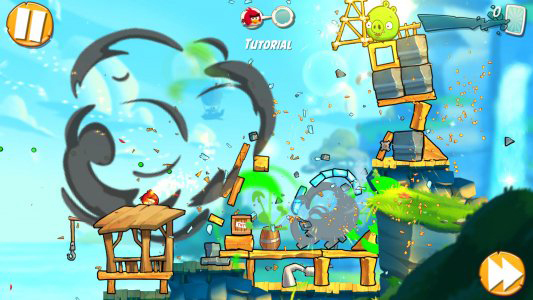 The biggest and most negative change comes within lives. You have five lives that are used to take out the pigs. If you run out of cards and there are still pigs remaining, you’ll have to use a life. Once you’re out of lives, you’ll need to do one of three things to replenish: use gems (which are purchased for actual cash with an in-app purchase), watch a 30-second advertisement, or wait 30 minutes for each of the five lives. Overall, it’s a really poor way to implement ads and in-app purchases into the game, but the changes in gameplay are so great here that it’s difficult to recommend an older Angry Birds game over this one anyway. Do note you’ll need an internet connection the first time you launch the game to download additional data. After that, you can rely on offline play entirely.
The biggest and most negative change comes within lives. You have five lives that are used to take out the pigs. If you run out of cards and there are still pigs remaining, you’ll have to use a life. Once you’re out of lives, you’ll need to do one of three things to replenish: use gems (which are purchased for actual cash with an in-app purchase), watch a 30-second advertisement, or wait 30 minutes for each of the five lives. Overall, it’s a really poor way to implement ads and in-app purchases into the game, but the changes in gameplay are so great here that it’s difficult to recommend an older Angry Birds game over this one anyway. Do note you’ll need an internet connection the first time you launch the game to download additional data. After that, you can rely on offline play entirely.
Compatible With




We won’t lie to you: Gameloft’s Asphalt series, dating back to 2004 with an entry on the original Nintendo DS, is largely a clone of Burnout, the popular 2000s high-speed racing game. Since Asphalt 4, the games have made the move to Android and iOS, and largely have found themselves to be critically and commercially successful. The most-recent main entry in the series, Asphalt 9, is a few years old now, but it’s also one of the best racing games we’ve seen on either mobile platform, and if you’re into Burnout-styled games, it’s definitely worth checking out. Like most mobile racing games on phones and tablets, Asphalt 9 has several different driving schemes and techniques you can use to drive your car through races and courses, completing missions and other achievements. Tilt to steer (the default mode for most racing games, which involves using your device’s accelerometer), tilt with icons, on-screen controls, and tap to steer are all options, though we found the on-screen controls and the tap to steer options to be the most reliable for steering quickly and accurately. Unlike a game like Real Racing 3, Asphalt feels far more arcade-styled, with fast-paced destruction always right around the corner. You can collect nitro to boost your car, and you can use that nitro to burst through other cars, destroying the competition in the process.
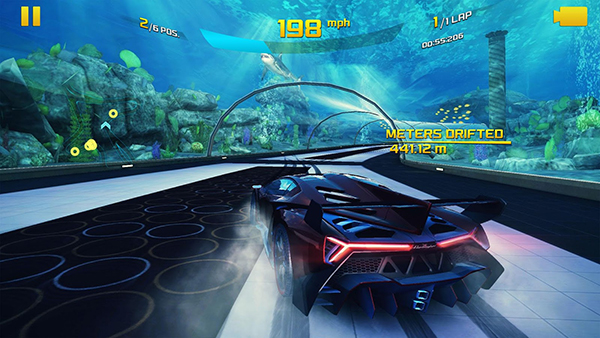
As a free-to-play game, it should come as no surprise to readers familiar with this sort of pricing structure that buying cars in Asphalt 8 can get pretty expensive. The game has in-app purchases up to $99.99 on both Android and iOS, both for cars and credit packs for buying accessories and other optional stuff. In-game cash can be earned through racing, but as the game gets higher in terms of levels and difficulty, you’ll find yourself earning less and less cash for faster and more powerful cars. The grinding for cars can get pretty intense, but there’s no car that can’t be gained through some in-game dedication—even if the system itself is a little too grindy for our tastings. Still, Asphalt 9 looks great, even after four years of aging, and we can’t help but recommend the game to other users that might be interested in some offline racing.
Compatible With




Platformers have a bit of a messy history on iOS and Android devices. Early platformers on mobile games focused on using virtual buttons and D-pads for controls, creating a trend of poorly-controlled games where the mechanisms for controlling these characters just didn’t translate well to mobile devices. That said, platformers over the past few years have learned their lessons the hard way, revitalizing the entire genre on mobile devices with new control schemes and new ways to make the platformers work. Badland is one of those games, originally released in 2013 for iOS and Android before eventually making its way to Windows and home consoles in the years that followed. The game famously won Apple’s Game of the Year award in 2013, and it’s easy to see why. In Badland, you play as Clony, a small black creature that makes its way around the world through flying with physics-based gameplay. The entire world is trippy, coated in silhouettes and patterns, making it appear dystopic and beautiful all at once. Badland controls through a one-touch based gesture, pressing down on the screen to raise your character(s) and releasing to release them, as you guide your way through a world filled with destructive elements, rotating gears, and dangerous obstacles. You can gain power-ups along the way, allowing your character to shrink, grow, speed up, and so much more, making navigation a lot easier throughout the game.
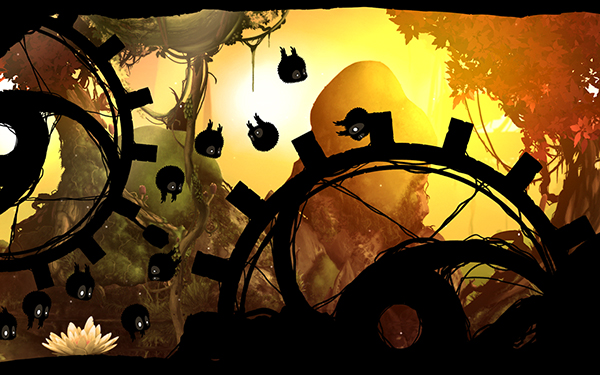
What really seals the deal with Badland, however, is the gorgeous visual and aural design elements. Seriously, this game is absolutely downright gorgeous, with some incredible 2D animation that, despite being four years old, still looks great on iOS and Android. The game clocks in at $3.99 on iOS and free with ads on Android, though the ads in our experience were pretty unbearable enough to make us jump for the $3.99 in-app purchase for the full ad-free game. If you’ve already played through the first Badland, you’ll want to check out Badland 2, also available on iOS for $3.99 and Android for free with ads.
Compatible With




Originally developed by Bioware in the late 1990s and early 2000s, Baldur’s Gate: Enhanced Edition and its sequel are both excellent additions to any RPG lover’s catalog of titles and games on your portable phone or tablet. If you’re new to the series—as many people will be—here’s what you need to know. Baldur’s Gate is based on the rules and guidelines of Dungeons and Dragons 2nd edition (then still called Advanced Dungeons and Dragons), first published in 1989. This means your gameplay is largely going to feel like an extended single-player campaign of D&D, so if you aren’t a fan of the rules of tabletop roleplaying, you might not want to dive right straight into Baldur’s Gate. For everyone else, let’s take a look. In Baldur’s Gate on iOS and Android, you’ll find the entire system has been rebuilt from the ground up to better support gestures and tapping-based menus. The first Baldur’s Gate isn’t quite as well-built as the sequel that followed a year later on mobile devices, but the way the plot’s laid out, you’ll want to play the first one before you head into the second. There’s a bit of an extreme learning curve here, if we’re being honest, especially if you aren’t familiar with the more rigid rules of 2nd edition Dungeons and Dragons when compared to something like 5th edition. You’ll also have to learn all about real-time gameplay and pausing if you want to get any good at Baldur’s Gate. The plot is straight out of fantasy-based Dungeons and Dragons campaigns as well, so if you aren’t into fantasy—with all the trappings and cliches that come included with that genre—this game’s plot might not be the biggest interest for you.
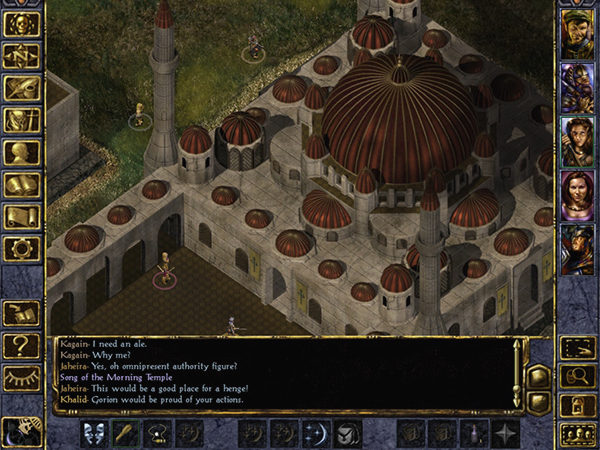
Overall, while some parts of Baldur’s Gate’s control scheme were certainly lost in translation, this is still one of the all-time great RPGs right on your iPad or Android tablet. This game series was what put Bioware on the map before making Knights of the Old Republic and Mass Effect, and if you enjoy old-school D&D, you’ll enjoy your time with the game. Just make sure you can deal with the finicky interface before putting down your $9.99 for the game on iOS or Android.
Compatible With




Even if you haven’t played Crossy Road in your life, you’ve probably played its spiritual predecessor Frogger. Whether in the arcades or on old Windows 95 machines in your home, Frogger’s been a go-to game for millions of players, and Crossy Road is absolutely the successor of that genre in nearly every way, all the while maintaining what made Frogger so compelling to begin with. Instead of levels and scores to compete with, Crossy Road takes its Frogger inspiration and combines it with the endless-runner games we’ve seen grow in popularity on mobile platforms, including the likes of Temple Run and Jetpack Joyride. The basic premise of Crossy Road is simple: you control a chicken crossing the road (get it?), using taps of your finger on your phone’s device. The road is, unsurprisingly, filled with dozens of moving cars, SUVs, and semi-trucks. Frogger players will notice aspects of that game popping up in large portions, including river-and-log sections and faster cars later in the game. You always start back from the beginning of the level, as with any other similar endless runner game. The visuals match the style of something like Minecraft, with a focus on blocky 3D graphics that represent retro aesthetics while maintaining that modern arcade feel. As you tap your way across the screen, the entire game gets more and more difficult, with the option to unlock more than 200 new characters and additions.
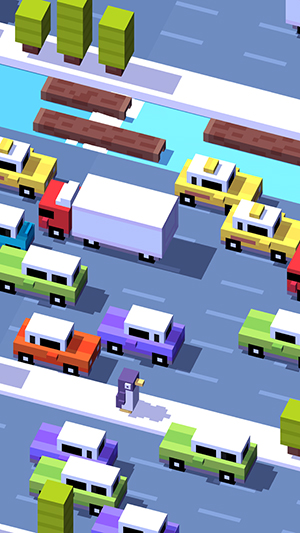
Overall, Crossy Road is a total blast of an arcade-style mobile game, combining the class elements of Frogger with the designs of modern mobile endless runners to make something really special. It might seem like a simple design, but we know players are going to have a blast playing through Crossy Road. It’s an absolute blast to keep on your phone for short playthroughs or for long plane trips. The game’s had over fifty million downloads since launch, so if you aren’t one of the mobile gamers already hooked on Crossy Road, you’ve got nothing to lose. If you’re looking for something similar, developer Hipster Whale has also created the popular Pac-Man 256, an endless version of Pac-Man, and Disney Crossy Road, taking the original Crossy Road strategy and recreating it with licensed Disney characters.
Compatible With




Mobile games have something of a bad reputation among the so-called “hardcore gamer” market. Typical mobile games are designed with short, repeated playthroughs in mind, often using free to play gaming structures that either limit how much you can play before having to shell out real money to continue (or choosing to wait for your resources to replenish without being able to play the game), or bother you with advertisements between playthroughs that can slow your phone down and really drain the battery. The problem, of course, is that the majority of popular genres on console and PC—everything from first-person shooters to platformers—have had a mixed history in translating to a mobile platform, which seemingly limits the kind of content you can make and release on Android and iOS and still manage to hit a certain threshold of success. This is why roguelikes are the perfect genre to hit crossover appeal between gamers and casual smartphone owners alike, and Downwell is the ideal game to meet that fate. Downwell is a direct port from the same game available on Steam, PS4, and Playstation Vita, though the game did originate directly from iOS before arriving on Android and those other platforms. Still, the crossover appeal is obvious when looking at the platforms the game is accessible on. The game even comes from publisher Devolver Digital, known for publishing games like Hotline Miami and Sam & Max on PC and consoles. However, Downwell isn’t just a roguelike—it’s also an arcade-style shooter, which means it has incredible crossover appeal. With a hard difficulty curve, power-ups, collectibles, and easy to learn controls, Downwell is one of the few games on this list with crossover appeal between the two platforms.
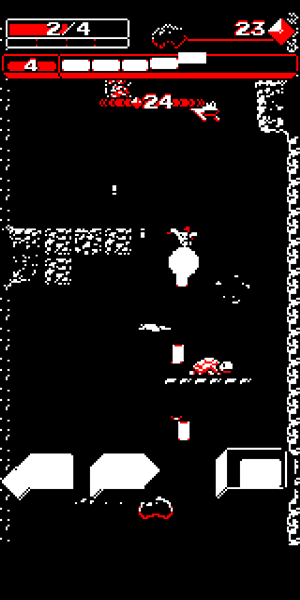
At its core, Downwell is a retro-stylized game that asks you to make your way down a well using nothing but the gun boots equipped on your feet. You can move left and right by tapping on the screen or using on-screen buttons, and your character shoots by using the jump button on your display. Shooting your gun boots allow you to kill enemies, destroy barriers, and hesitate in the air until you run out of ammo. Landing on the ground replenishes your ammo, and you can continue down the route. It’s a fast-paced game where runs can last anywhere from a few minutes to thirty minutes or more, gathering power-ups through hidden stores, destroying enemies, and doing your best to make it to the bottom of the well. Every level is procedurally-generated, as with most roguelikes, which means you’re always competing against brand new levels and enemies. Downwell is critically acclaimed for a good reason: it’s a blast, finding the perfect middle-ground between casual mobile title and hardcore gaming experience. At $2.99, the game has no ads or in-app purchases, making it ideal to keep on your phone to play in short bursts.
Compatible With




First launched back in 2013, Duet is an insanely popular game on both iOS and Android, with 50 million downloads on Android alone. The game was critically acclaimed upon release four years ago, and it’s easy to see why. Everything from the presentation, the art design, the music, and the difficult-but-fair gameplay make this an excellent addition to your offline collection of games. As a challenging game for casual and hardcore gamers alike, Duet is one of the few games on this list destined to thrill, frustrate, and excite players of any capacity. Whether you’re looking for a game that keeps you occupied for a few minutes or a few hours, Duet can fulfill that and so much more—it’s one of the most difficult casual-style games we’ve seen on mobile platforms. The graphics are simple and beautiful, with most of the gameplay taking place against a dark black background. You control two dots, one red and one blue, which rotate around each other in sync with one another, as you spin them one way and the other to change their location and dodge difficult obstacles and barriers. If you happen to hit a barrier, your dot explodes in a paint splatter that remains on the level in future retries, creating this beautiful sea of blue, red, black, and white. The game really shines through with its music, though, which resembles cold and distant trip-hop and techno, helping to create the desired atmosphere of energy and fast-paced movement, guiding you through a maze of rotating lines of destruction.
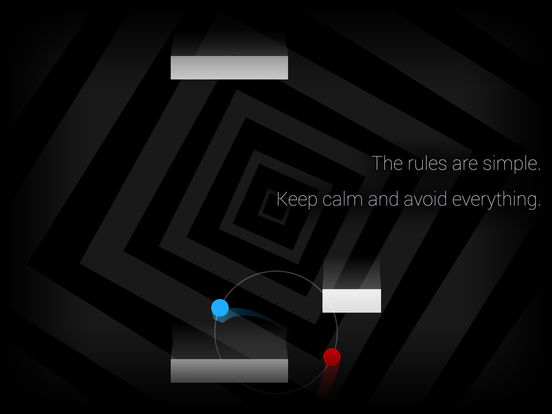
All of this makes for an experience that essentially represents the videogame equivalent of chugging an energy drink: it makes you jittery and a bit stir-crazy. This game oozes personality, but not without some tight gameplay too. Levels are presented in short, easy-to-accomplish goals, but with enough challenge that by the time level three rolls around, you’ll be dying a lot before you move onto the next level. There are a couple of flaws in Duet, however. First, ad breaks on the Android version (the iOS version is a paid $2.99) are way too long and happen way too often. Every few levels, the game will ask you to upgrade to the paid version of Duet, and if you refuse, a fifteen-to-thirty second, unskippable ad will begin to play. Obviously, we also wish the iOS version had a free tier, but nevertheless, both the Android and iOS versions of the game are more than worth the $2.99 entry fee for an ad-free experience.
Compatible With




The Escapists is a console-quality game originally released for Xbox One, Windows, and PS4, before being ported to both iOS and Android in early 2017, and for the right audience, it is an absolute blast. A top-down strategy game, your focus in The Escapists is to find a way to escape from the prison you’ve been locked into, which gradually increase in difficulty as you proceed through the game. You can craft and gain access to items and tools to accomplish your goals, barter with inmates within the jail to get them to give you their items, pr steal the equipment that you need. Money can be raised, meals can be eaten, and daily routines can be followed to accomplish your goals as fast as possible without getting sent to solitary confinement by the guards. The game has a cute retro aesthetic that, while maybe a bit played out, still works well enough to function lower-powered devices without taxing your phone too much. Whether or not the gameplay appeals to you will depend on your opinion of crafting, survival, and strategy games. If you enjoy games like Minecraft or Terraria, with a large focus on crafting, while also enjoying strategy games like the Civ series or StarCraft, Escapists might be right up your alley. Players looking to make the move from PC or console to mobile will be happy to know this is a faithful port, with all the recipes and strategies from the original, and the possibility of DLC and expansions coming down the line at a later time.
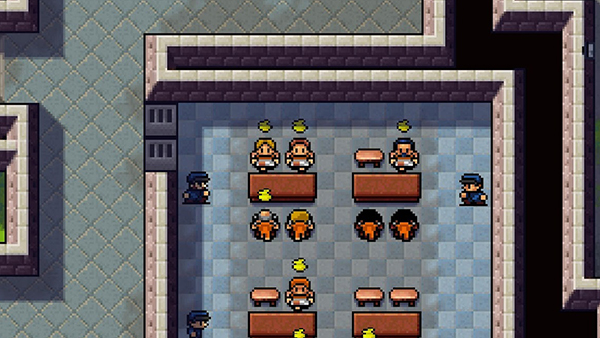
The only major problem with The Escapists on mobile comes down to the controls, which are built with a virtual gamepad and D-pad buttons, to our general disappointment. Thankfully, the game has added Bluetooth controller support on both iOS and Android within the few months post-launch, and we absolutely recommend playing the game that way. It’s not that the controls are terrible, but the game was clearly built around a specific control scheme, and we hate seeing it left in the dust. Overall, for just $3.99, The Escapists is an absolute blast, and we totally recommend keeping this one on your phone for longer car rides. Whether you’re a crafting fan or a strategy fan, you won’t regret it.
Compatible With




EvoCreo was started as a Kickstarter project back in 2012, where it raised $2683 with a $2000 pledge goal. The game was originally announced for Android, with later releases on iOS and PC, though it does appear that the game only ever arrived on mobile platforms (along with the ill-fated Ouya home console). As expected, EvoCreo isn’t the only mobile title trying to capture some of that original Pokemon magic on mobile devices, though it is one of the few RPGs that try to match the visual look of the series as closely as possible. Anyone familiar with Pokemon’s third-generation of games will feel instantly at home here, as the 16-bit graphics seem directly inspired by Pokemon Ruby, Sapphire, and Emerald (with a bit of the fourth generation thrown in as well, as EvoCreo seems to treat the games with a bit more respect for how buildings work in terms of depth). The beginning moments of EvoCreo set up a similar situation to every Pokemon game imaginable. You’re asked your gender, your name, and also asked to name your sibling, similar to how you name your rival in the earlier Pokemon games. You’re given a task that will take you throughout the entire world of Zenith, and asked to choose a Creo (essentially, a Pokemon) to start your journey. After jumping through a couple of hoops and speaking with your mother, you’re allowed to venture off into the region with your brand new Creo pal by your side, ready to start an adventure. The experience of EvoCreo isn’t identical to Pokemon, however. There are some key differences between the two that make EvoCreo feel like its own thing without feeling too much like a copy of the original series. The biggest changes come from the starter Creos, which wisely choose to forego the traditional experience of selecting a water, fire, or grass type in exchange for creatures with different stats. Each Creo you can choose from has a personality type that matches its stats, which you can view in number form. When you aren’t moving around the overworld, you’ll be spending your time in battle. Unsurprisingly, the battle system here feels like a simplified version of what we’ve seen in past Pokemon games. Your battle options are along the bottom of the display, and you can select one of five abilities learned by your Creo. 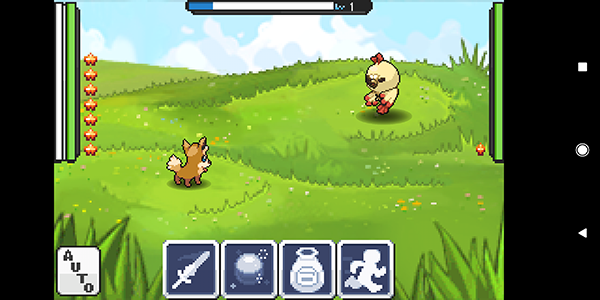 You’ll find wild Creo in the tall grass as you walk through the world, and you have items in your bag that can capture up to five Creo to use as your own. There are some changes to how the battle and the level system works. For example, your party levels up all at once, similar to how EXP Share works in Pokemon. Creos each have three normal moves, a healing move, and an “elite” move that is more powerful than the rest. Some additional changes, like boons and interchangeable traits, help to make some changes compared to Pokemon. While the game doesn’t quite have the same level of polish that generations of Pokemon games have led to, there’s a lot to love here. Outside of some issues with the controls, EvoCreo is an incredible mobile RPG that gives twenty-somethings with a love of Pokemon and a feeling of nostalgia for the series something to play while on the way to work. For $0.99, you can’t go wrong with picking up this game, especially if you’re looking for an involving RPG with a solid battle system and hours on hours of gameplay.
You’ll find wild Creo in the tall grass as you walk through the world, and you have items in your bag that can capture up to five Creo to use as your own. There are some changes to how the battle and the level system works. For example, your party levels up all at once, similar to how EXP Share works in Pokemon. Creos each have three normal moves, a healing move, and an “elite” move that is more powerful than the rest. Some additional changes, like boons and interchangeable traits, help to make some changes compared to Pokemon. While the game doesn’t quite have the same level of polish that generations of Pokemon games have led to, there’s a lot to love here. Outside of some issues with the controls, EvoCreo is an incredible mobile RPG that gives twenty-somethings with a love of Pokemon and a feeling of nostalgia for the series something to play while on the way to work. For $0.99, you can’t go wrong with picking up this game, especially if you’re looking for an involving RPG with a solid battle system and hours on hours of gameplay.
Compatible With




Unlike other pixel-based games you can grab from Google Play, Evoland isn’t about an unoriginal adventure and a silent protagonist (except for when it is). Evoland is about the evolution of RPGs in general, from simple 8-bit sprites all the way to current day three-dimensional graphics. While there are certainly some gripes to be had with some of the game’s mechanics, Evoland knows what it is, and more than anything, that is a victory for the game itself. The rare RPG where the leveling-up is done by the game itself, Evoland can be best described as a museum honoring RPGs from their earliest days on the NES, leading players through a world of Zelda, Final Fantasy, and so much more. The earliest parts of this game limit you to moving around the world, finding chests and unlocking not just new abilities, but new effects as well. For example, the game is played completely silent until you find a chest containing “Sound FX,” which input some standard footsteps and other noises into the world around you (the music for the game comes later, locked in a separate chest).
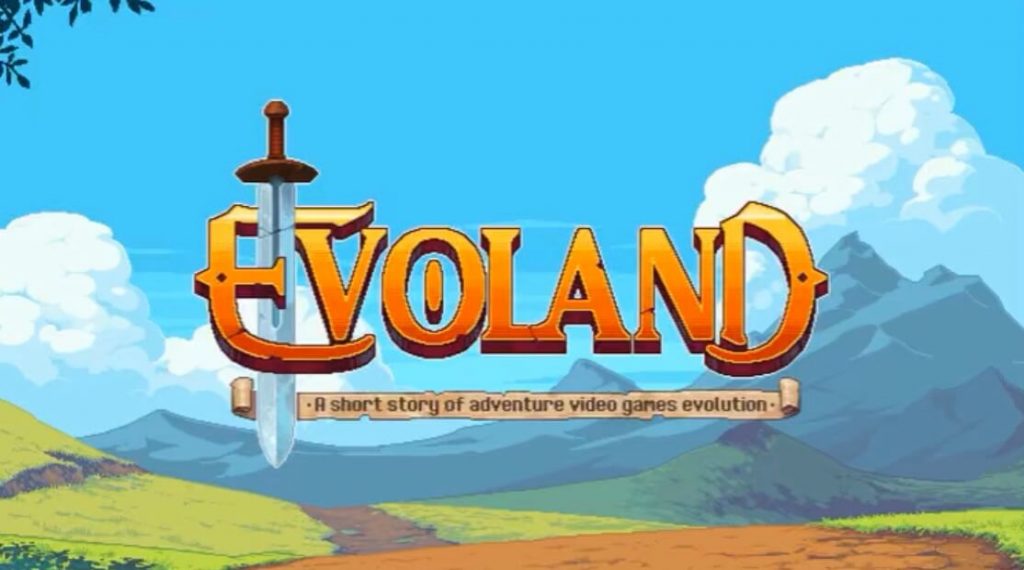
Camera movement, weapons, and even enemies are all unlocked in the first few minutes of playing the game, as you use the chests to effectively build the world around you. The first twenty or thirty minutes of this game feel as fresh as anything we’ve seen on the Play Store previously. Hidden references and nods to moments in gaming history, like the SNES’s Mode 7 map, expand the game in ways you don’t see coming. Random encounters are added, and though the game retains some of its traditional combat when you’re in a village, town, or cave, the turn-based system feels so much better that you’ll inevitably wish the whole game played with that combat style. Some other references, including adult townsfolk that won’t talk to you while you’re a child, or locked areas until you upgrade your equipment, do a fantastic job in making this feel like the 90s games it’s emulating without going too over the top. Evoland isn’t without some flaws, both technical and mechanical, and several of those problems relate back to the controls. Though you unlock a circle pad over your D-pad within the first few moments of the game, moving your character in this game never feels fantastic. Because you’re moving your character over a grid-based system for much of the game, but your character can move in 360 degrees, it’s easy to get caught on elements of the environments, like rocks and trees.
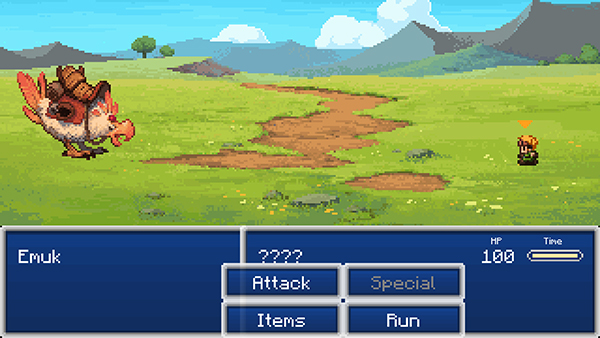
Despite playing through much of the game, I never improved at navigating through the world without some issue, and this also translated into problems with the combat. Getting hit by an enemy in Evoland is a one-hit kill, booting you back to the main menu, and since it’s easy to accidentally walk into an enemy, deaths can often feel unfair or cheap. Problems aside, Evoland is an excellent addition to RPGs on Android. Unlike so many mobile games before it, Evoland seems to understand the history of classic games like Zelda and Final Fantasy at a core level, including wink-nudge references and in-jokes that give the game a distinct sense of humor. Though a bit pricey at $4.99 on the Play Store, as a crash course in classic game history and as a quality RPG on its own, Evoland is worth picking up. The game begins to slow down a bit in the latter half of the game, as unlocks and upgrades become rarer and the game refocuses its attention on the plot. Despite some missteps with its story and control system, Evoland is a great game for the classic gamer in all of us. If you long for the day of sprites, chiptune music, and finding quests from NPCs around town, this is one of the best nostalgia trips available on the store.
Compatible With




Fallout Shelter is a massively-popular mobile game of an even more massively-popular console and PC franchise published and developed by Bethesda, the major gaming company behind the mainstream Fallout series, as well as The Elder Scrolls series. As a mobile adaptation of the long-running series, Fallout Shelter was released in the run-up to the release of Fallout 4, announced during the company’s E3 2015 presentation and released for both iOS and Android that summer. The game had a wide variety of inspirations for its simulation-based gameplay, ranging from FTL: Faster Than Light and XCOM to the obvious predecessor, SimCity, but with the obvious twist of sardonic humor and apocalypse-based humor. In the game, you become an Overseer of a Vault of your choosing in the Fallout universe, guiding and organizing the people living inside your Vault just as you would in any other sim-based game. Like with other titles, you must monitor the needs of your characters, giving them food and water and allowing them to work for you to generate power for the Vault. Each character also has a stats system, the SPECIAL system taken from mainline Fallout games, which allow each character to do their own thing in excellence. While your NPCs work away in your Vault, you can also spend your time making and building new varieties of rooms throughout the Vault, which provides different use cases depending on what you need. It’s standard simulation game things, but the polish here is really unbeatable.
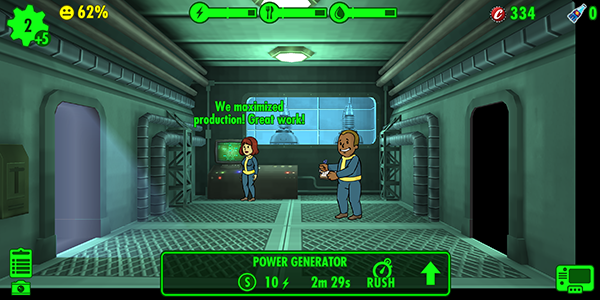
The game isn’t immune to some of the shadier aspects you might expect from mobile gaming. For example, building rooms and other tasks have timers built-in, which can be a hassle when you’re looking to play the game for ten minutes during a commute. Fallout Shelter does its best to make these mobile transactions feel a bit less shady than they truly are, adding in the ability to skip the timer on these tasks without dropping cash by risking failure, but it still manages to feel a little shady overall. There’s a ton of microtransactions here as well, charging up to $99.99 per item. Still, the game looks great and runs incredibly smoothly on most mobile hardware. Despite some mixed reviews at launch, Bethesda has spent some serious time updating the game with new features, and it shows. The game has a strong 4.6 rating on Google Play, and even offers full support for wider phone ratios like the 18:9 screens we see on devices like the Pixel 4 XL. Overall, fans of sim-based titles will find something to enjoy here—especially if you’re familiar with the Fallout series in general.
Compatible With
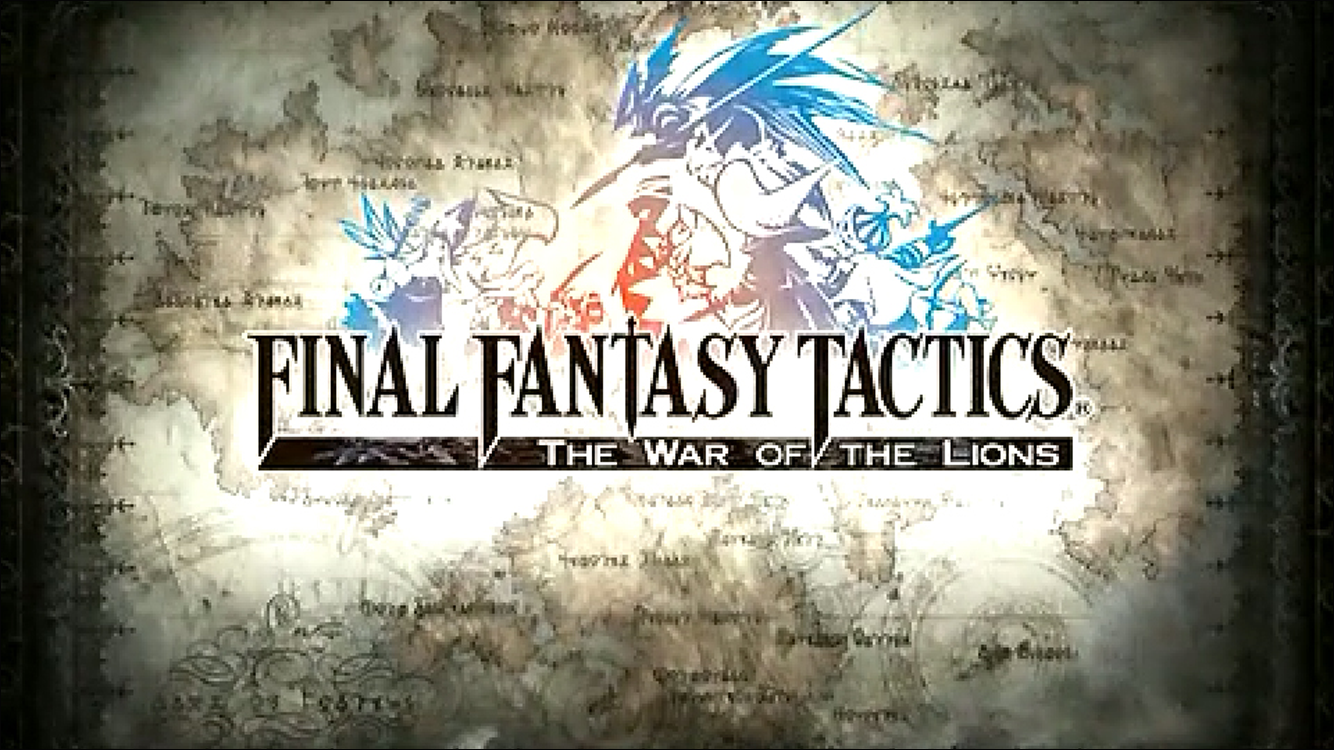

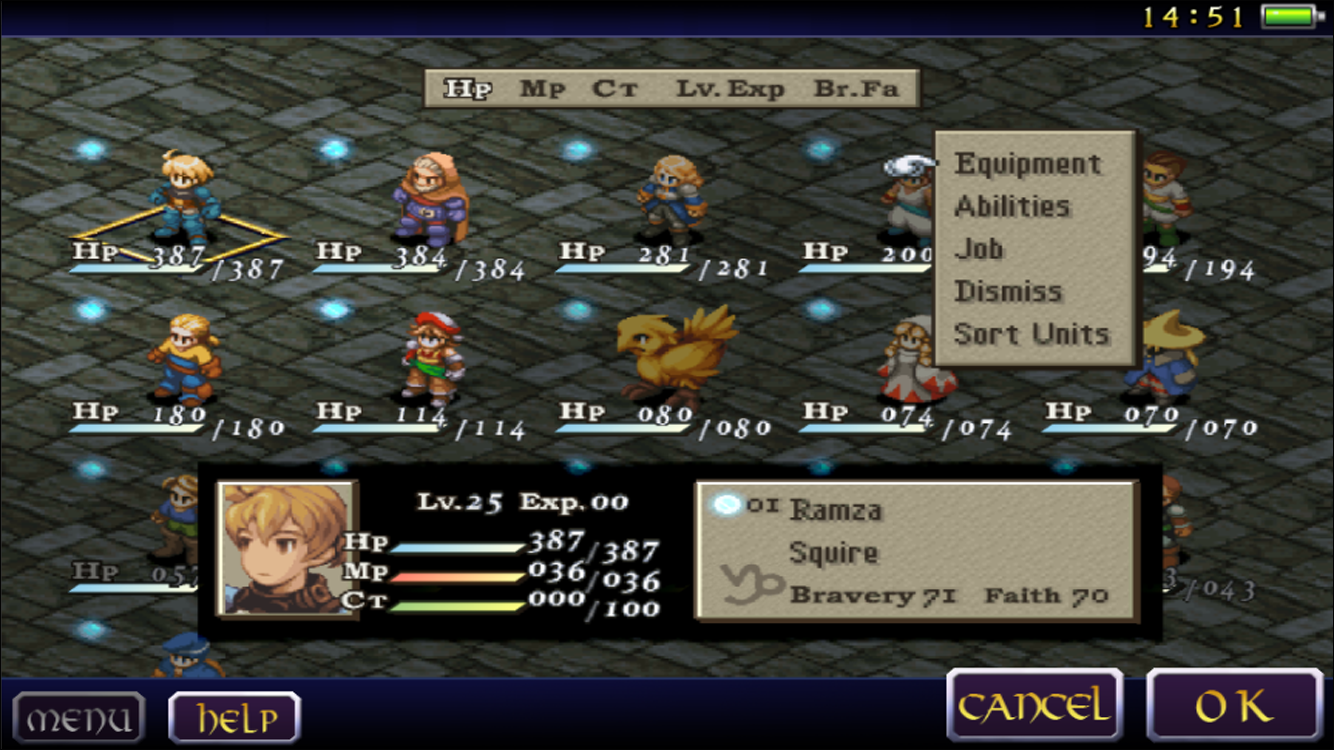
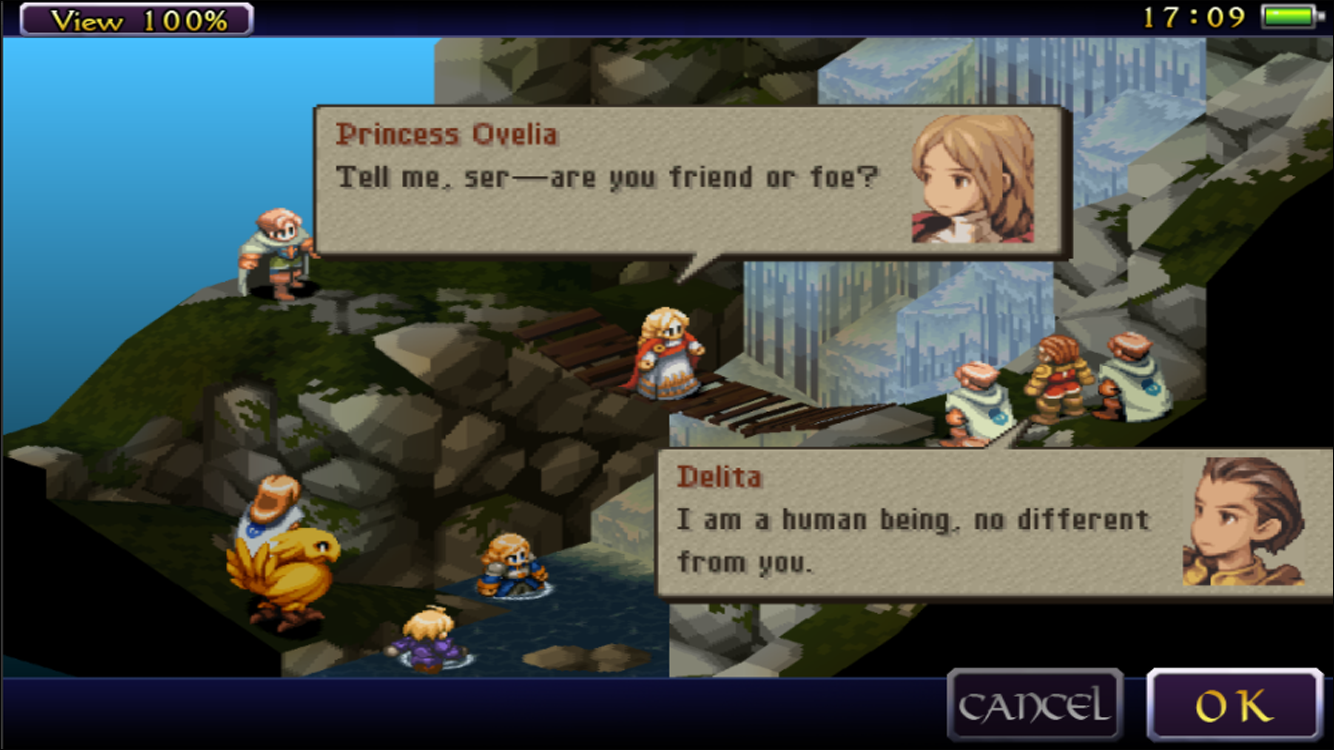
Unlike most of the games on this list, Final Fantasy Tactics: War of the Lions, is a full-price $11.99 console port on Google Play. While this may sound well out of your budget, you absolutely get what you pay for with FFT. This is a classic SRPG from Square, and it’s worth every penny if you’ve never played the game before. For those unfamiliar with this spin-off of the classic Final Fantasy series, FF Tactics is a tactical role-playing game similar to Nintendo’s Fire Emblem series, first released to the United States in 1998 on the original PlayStation. Though sales were initially small, it was eventually remade into Final Fantasy Tactics: War of the Lions for the PSP, recreated in widescreen mode, and featuring a new translation with improved dialogue. The game has become a cult classic both in Japan and the United States, praised for its tactical gameplay and the dark and creative storytelling. Among many fans of the RPG series, it’s now considered one of the best entries in the Final Fantasy lineup. Famously, Darius Kazemi, game designer at Bocoup, once told Kotaku, “Saying Final Fantasy Tactics is your favorite Final Fantasy game is like saying [West Wing president] Jed Bartlet is your favorite U.S. president. It is at once obviously correct, and obviously cheating.”  So how well does FF Tactics play on touchscreen devices? Surprisingly well, it turns out. It’s not the game with the best controls on this list, but overall, the game feels pretty good. You tap on the 3D-based grid system to control your party, rotating the map using arrows along the side of your display and swiping premade gestures to select options throughout the menu. It’s a pretty slick system, a good compromise between traditional video game menus and tapping on virtual D-pads. The gameplay holds up as well. If you’re a fan of the SRPG genre and haven’t checked out Final Fantasy Tactics, you’re doing yourself a disservice. Square’s efforts here are a cult classic for a reason. The story’s still as satisfying as ever, and despite their age, the cutscenes looked stunning on our test devices. $12 is a bit expensive for a mobile game, but remember this is a full-fledged console Final Fantasy game, and one of the best at that. If you’re more of a traditional RPG fan, check out Final Fantasy VI, also available for purchase. You won’t be disappointed.
So how well does FF Tactics play on touchscreen devices? Surprisingly well, it turns out. It’s not the game with the best controls on this list, but overall, the game feels pretty good. You tap on the 3D-based grid system to control your party, rotating the map using arrows along the side of your display and swiping premade gestures to select options throughout the menu. It’s a pretty slick system, a good compromise between traditional video game menus and tapping on virtual D-pads. The gameplay holds up as well. If you’re a fan of the SRPG genre and haven’t checked out Final Fantasy Tactics, you’re doing yourself a disservice. Square’s efforts here are a cult classic for a reason. The story’s still as satisfying as ever, and despite their age, the cutscenes looked stunning on our test devices. $12 is a bit expensive for a mobile game, but remember this is a full-fledged console Final Fantasy game, and one of the best at that. If you’re more of a traditional RPG fan, check out Final Fantasy VI, also available for purchase. You won’t be disappointed.
Compatible With




Any mobile gamer who keeps up on the hottest mobile games has likely become familiar with Gage’s name; his games, both on iOS and the assortment of Android ports that have made their way to the platform, are constantly excellent, offering up twists on classic games or uniquely new challenges in ways you never expect. From Really Bad Chess, a game that takes the simple concept of chess and shuffles the arrangement of the pieces to break the game, to Pocket Run Pool, a game that requires you to get certain multipliers to get high scores when sinking balls in pockets, Gage has created so many award-winning games, it’s hard to keep track. Flipflop Solitaire is Gage’s second crack at creating a perfected solitaire game, following his efforts on Sage Solitaire. That game combined solitaire and poker into a single title, creating a specific element of strategy he felt had been missing from the game previously. Now, in Flipflop Solitaire, Gage has returned to the famous single-player card game to find a new way to create new forms of playing centered around stacking cards. The game, as most Zach Gage games do, breaks the entire rulebook for Solitaire, removing the game’s central mechanics and reinventing them along the way. Flipflop Solitaire is based primarily on Spider Solitaire, which involves 10 stacks of cards in total. Flipflop, however, reduces the stacks to five to help maintain a portrait mode on mobile devices, and also allows you to place cards in both descending and ascending order.
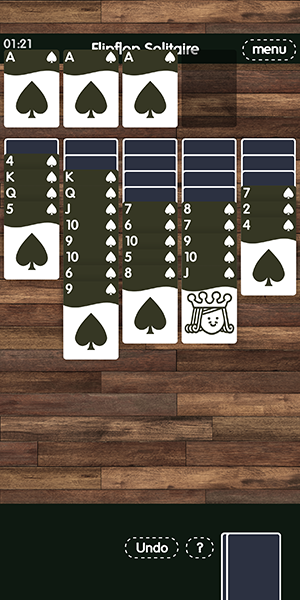
When you begin the game, Flipflop claims that 99 percent of deals are possible wins, which means almost every game you play is winnable if you’re careful. Of course, as you might imagine, things aren’t quite so simple. You’ll need to pay attention to your moves in order to succeed, and simply clicking around the screen won’t end with you winning any games anytime soon. There’s a real challenge to Flipflop Solitaire, but that’s one of the things that makes it so easy to play over and over and over again. And though the game begins with a single suit, making it simple enough overall, eventually you’ll come to balance suits that can only match with each other. The game gets more and more difficult as you play, helping to add a real sense of challenge to the game. As a free download, Flipflop Solitaire is a must-have for anyone who loves solitaire, Gage’s former games, or unique mobile challenges in any way. As usual, the free portion of the game is generous in basically every way, offering plenty of gameplay even if you’re unwilling to pay. If you can, however, absolutely consider dropping the in-app purchase to unlock the full game, which comes with the fifth suit and a special extended suit within the game. Overall, Flipflop is a must-have on mobile. From the visual design to the wonderful ambient music to the charming vibrations when you move cards around the game, Flipflop Solitaire is incredibly special.
Compatible With
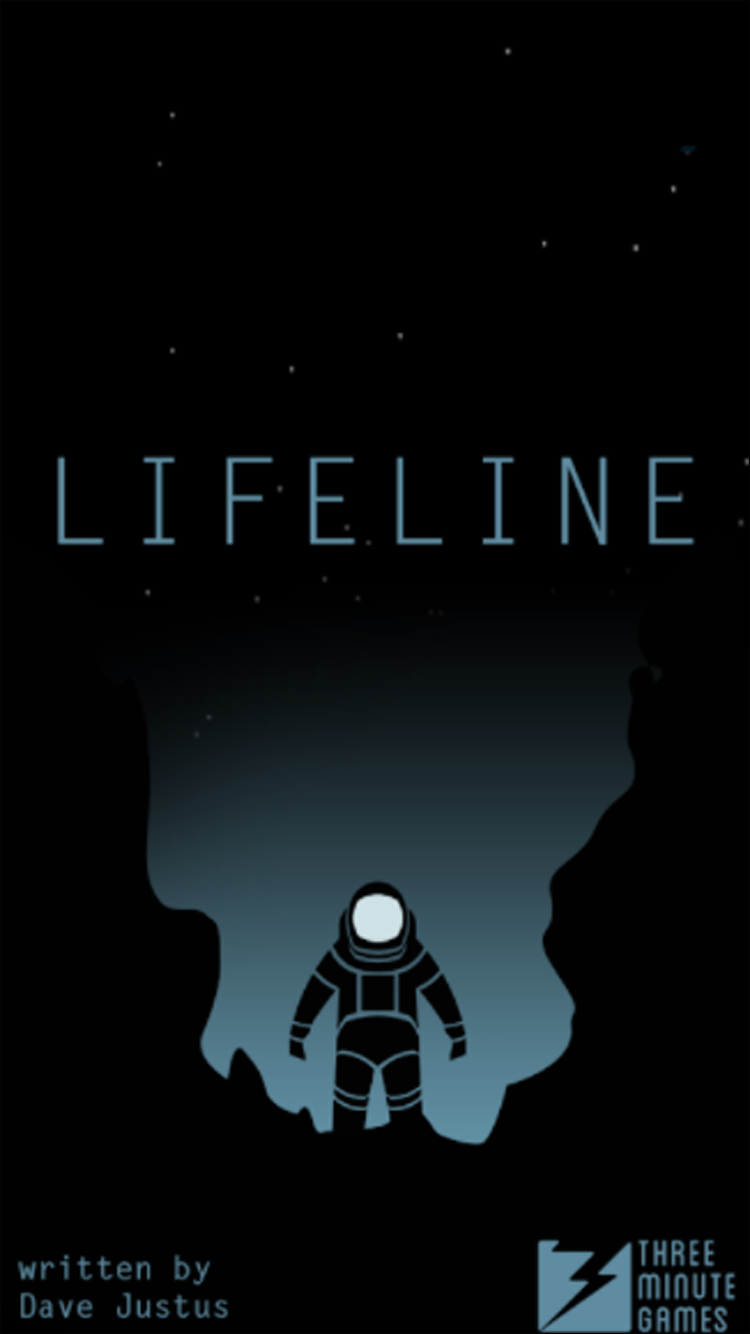
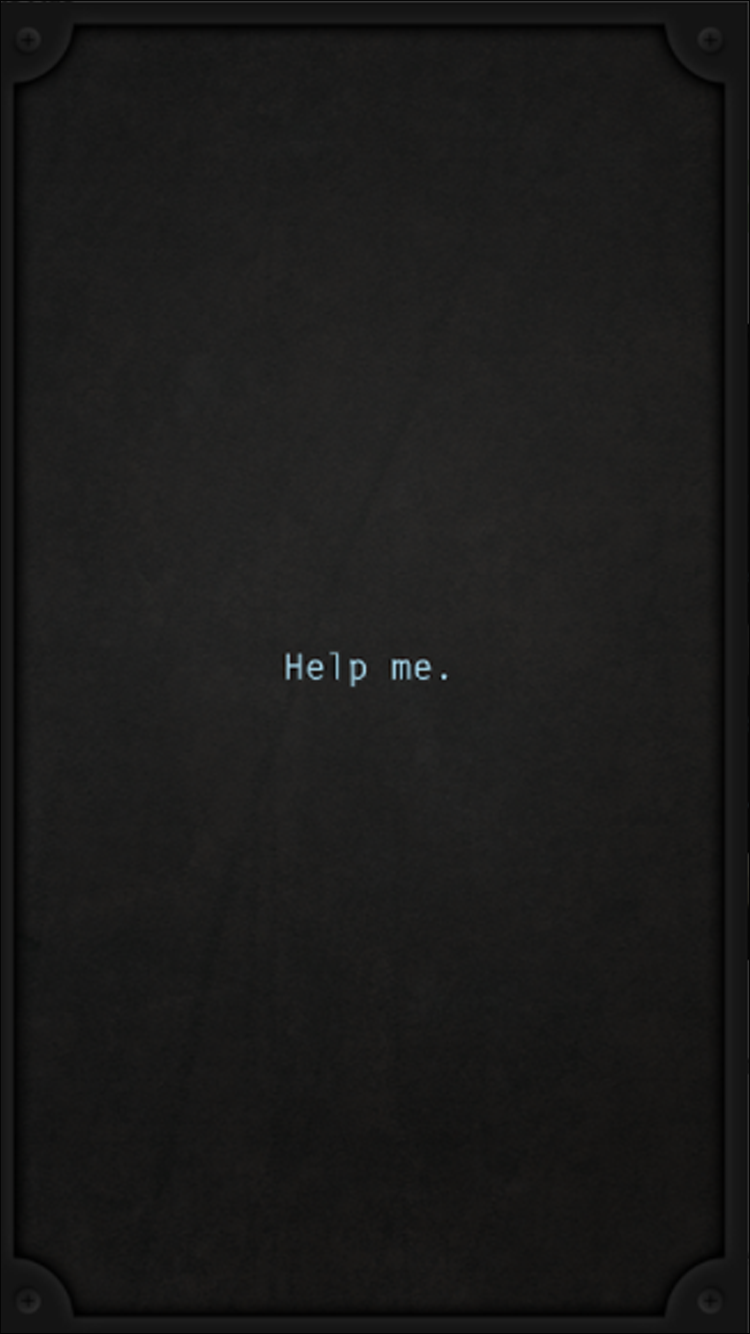
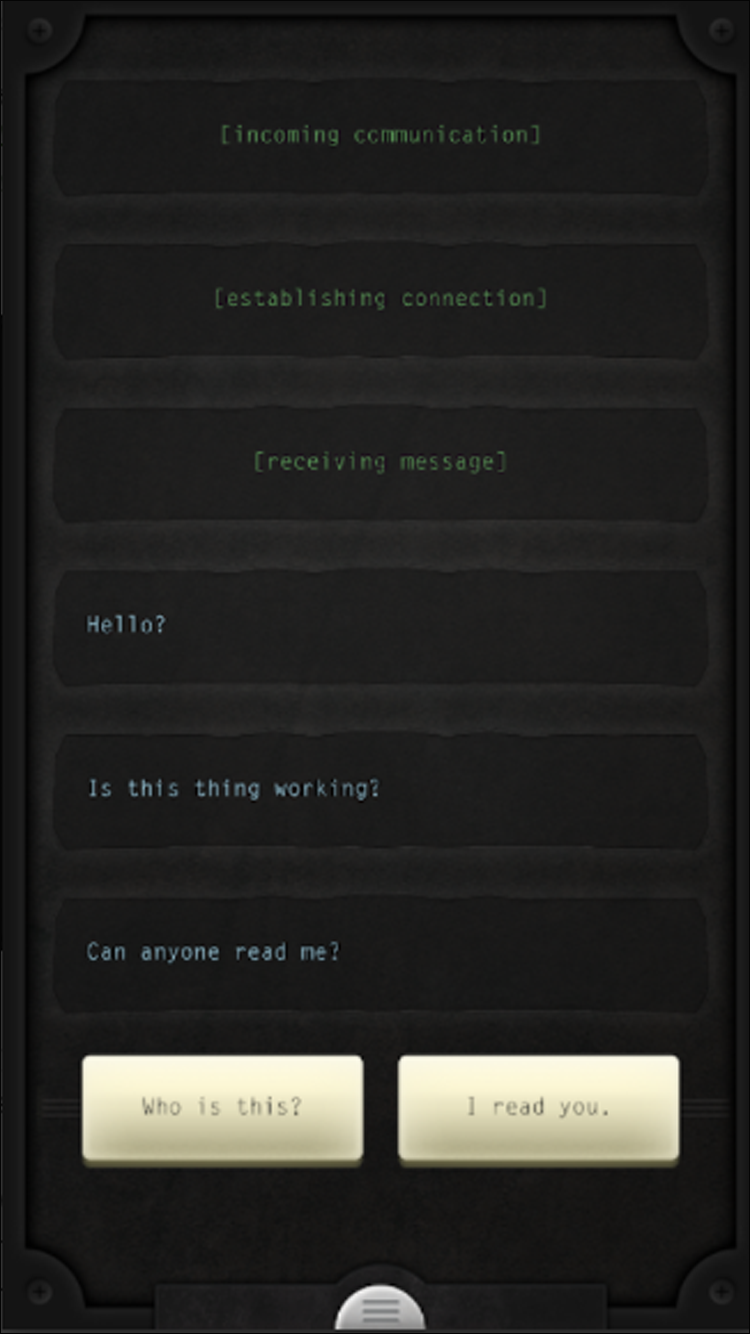
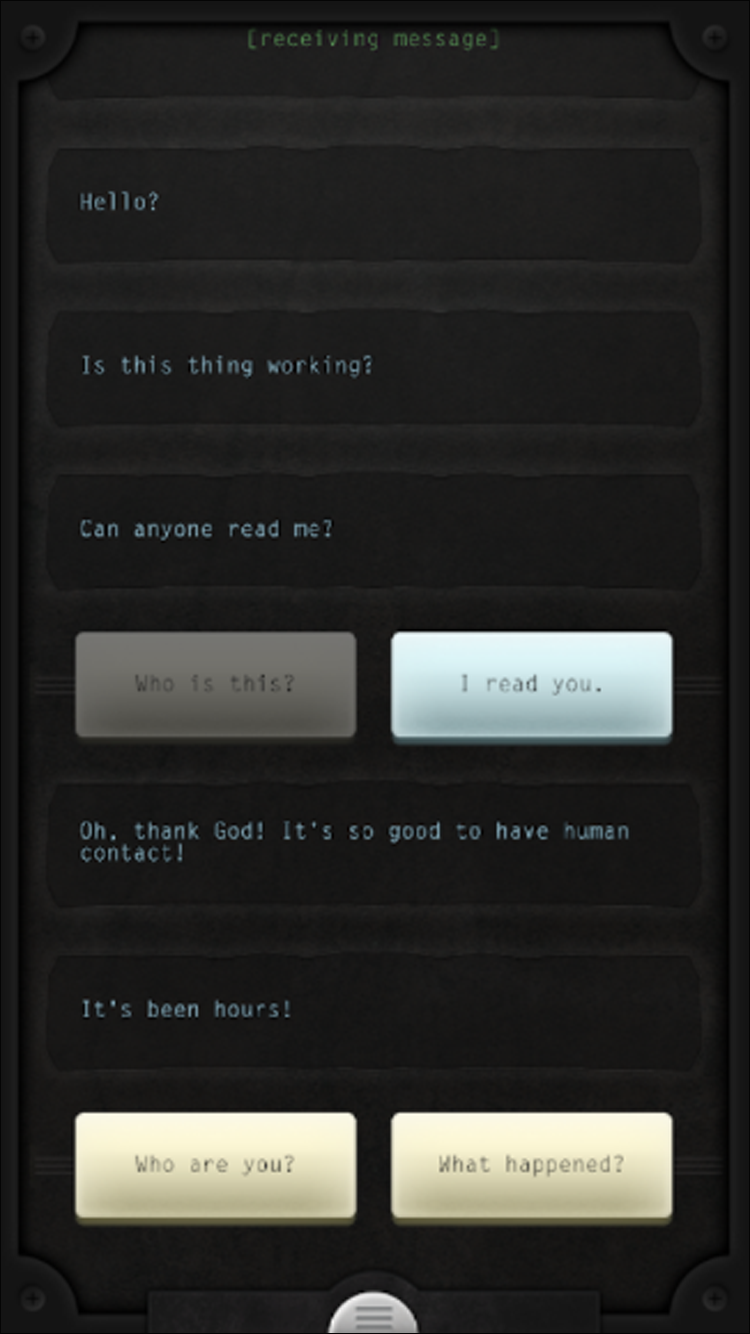
Similar to some of the more in-depth and retro RPGs we have on this list, Lifeline represents an evolution of a long-dormant format: the text-based adventure game. Lifeline is a series of video games written by Dave Justus, who previously co-wrote the prequel comic for Fables titled Fables: The Wolf Among Us, based on the Telltale video game of the same name. Unlike other games on this list, Lifeline’s presentation is simplistic and mostly text-based, limited to a message thread, and options for deciding the next message in the list of selections. You can choose how your player character responds in-game just by tapping on the options within the option. You play as yourself, receiving messages throughout the day from an astronaut named Taylor, who has crashed on a foreign planet far away from his own home. The game is completely played out in real-time, meaning you’ll be receiving messages as new updates come through, making the game feel incredibly realistic as you choose what this character does or doesn’t. Your actions mean Taylor will either live or die as your communication continues, and just like any other human, Taylor will have to eat, sleep, and interact with the planet. Without any amount of spoilers, decisions within this game can get incredibly difficult, making life or death decisions for the characters Taylor interacts with. This is a game you want to go into as fresh as you can, so avoid any information on the game online at all costs. 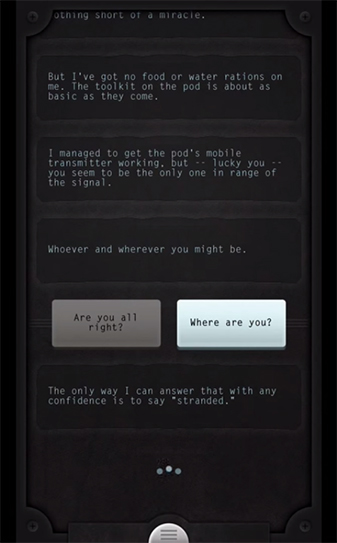 It isn’t a perfect game, of course. Some players have found Taylor to be a little too needy, for lack of a better word, requiring the player to interact with the game a bit more often than what would feel realistic. In our testing of the game, we found it to be in a happy medium for interactivity without letting the player grow bored in-between received messages, with pacing that, for the most part, hits the mark. When you beat the game twice, you do unlock a fast mode, allowing the game to be completed without the long waits to see different endings quickly. Lifeline’s popularity has spawned an entire series of games, all coming in at either $1.99 or $2.99, so if you enjoy the first game in the series, there’s plenty here for you to play without getting bored or losing interest between the series. If you’re a fan of text-based adventure games or any of the Telltale series of games, definitely check this one out. Despite the lack of focus on visuals, we think most players will have no problem envisioning the action in this game. It truly isn’t like anything else on the Play Store.
It isn’t a perfect game, of course. Some players have found Taylor to be a little too needy, for lack of a better word, requiring the player to interact with the game a bit more often than what would feel realistic. In our testing of the game, we found it to be in a happy medium for interactivity without letting the player grow bored in-between received messages, with pacing that, for the most part, hits the mark. When you beat the game twice, you do unlock a fast mode, allowing the game to be completed without the long waits to see different endings quickly. Lifeline’s popularity has spawned an entire series of games, all coming in at either $1.99 or $2.99, so if you enjoy the first game in the series, there’s plenty here for you to play without getting bored or losing interest between the series. If you’re a fan of text-based adventure games or any of the Telltale series of games, definitely check this one out. Despite the lack of focus on visuals, we think most players will have no problem envisioning the action in this game. It truly isn’t like anything else on the Play Store.
Compatible With




Though originally released in 2010, Limbo has remained in the spotlight for the better part of a decade for two major reasons. First, the succeeding game, Inside, was released last year to critical acclaim, prompting comparisons and replays of the original Limbo. Second, the game’s been ported to nearly every platform under the sun, including iOS and Android, allowing for the game to be played on the go by nearly anyone interested in Playdead’s first take on dark, atmospheric platforming. While the move to mobile platforms wasn’t perfect following the tight controls used in the original console and PC releases, Limbo is a great game to pick up for anyone curious about the hype. Limbo isn’t a game you’ll want to play while standing in line at the grocery store. The game as been repeatedly compared to film noir and darker games, using black and white graphics and film grain to create a specific mood while you play controlling a small boy awakening in a forest described as being “on the edge of hell.” You make your way through the game, jumping over platforms and solving puzzles against the dark backdrop of the game. You must make your way over tightropes, avoid hidden traps, and occasionally avoid near-death by monsters and undead humans out to kill the small boy you’re controlling, who’s looking for his lost sister throughout the game. Some deaths within the game are animated with all the gore you’d expect from a game as dark and twisted as Limbo, though these death scenes can be disabled and censored if you wish. 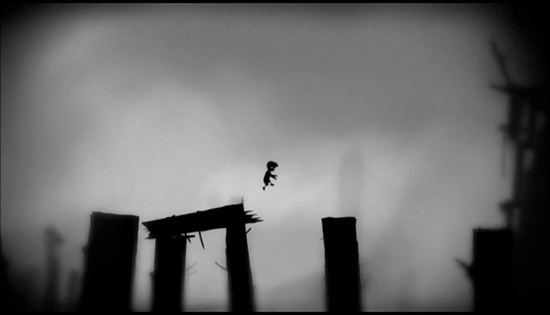 Controls are accomplished through swipes and drags. The longer you drag your finger, the faster the boy will run throughout the world in the direction you’ve pointed him in. Swiping up on your screen will allow the boy to jump while holding down on the screen will get the character to hold on to objects in order to move them to complete puzzles. The controls aren’t perfect, but they work far better than any virtual D-pad would ever allow for. For those gamers who missed out on Limbo during its original Xbox 360 release in 2010, you’ll want to grab this game today. At $3.99 on iOS and $4.99 on Android, it isn’t cheap, but the game routinely sees price drops that make it absolutely worth picking up. Any puzzle platformer fan looking for something to fill the void on iOS or Android will be happy with what Limbo offers.
Controls are accomplished through swipes and drags. The longer you drag your finger, the faster the boy will run throughout the world in the direction you’ve pointed him in. Swiping up on your screen will allow the boy to jump while holding down on the screen will get the character to hold on to objects in order to move them to complete puzzles. The controls aren’t perfect, but they work far better than any virtual D-pad would ever allow for. For those gamers who missed out on Limbo during its original Xbox 360 release in 2010, you’ll want to grab this game today. At $3.99 on iOS and $4.99 on Android, it isn’t cheap, but the game routinely sees price drops that make it absolutely worth picking up. Any puzzle platformer fan looking for something to fill the void on iOS or Android will be happy with what Limbo offers.
Compatible With




If you’re looking for the kind of game where you can do whatever you want in your own little world, you’re going to want to grab Minecraft (formerly Minecraft: Pocket Edition). You probably know of Minecraft, unless you’ve been living under a rock since the game’s initial beta launch in 2009, nearly a decade ago. The game is, in every way, a bona fide phenomenon around the world, inspiring players of all ages to come together and celebrate the game on nearly every single platform available. Minecraft’s continued success is owed to plenty of factors: positive word of mouth, a buzzing online community, popular Let’s Players and streamers playing the game online for entertainment, and of course, the presence of Minecraft on nearly every game console or mobile device on the market today, including iOS and Android devices. Just because Minecraft is an established property doesn’t mean you shouldn’t play the mobile version of this popular game. The portable version of the game has seen consistent updates from Mojang and Microsoft, bringing the Pocket Edition closer than ever to the desktop and console versions of the game. Recent updates have added The End, finally bringing one of the most commonly requested areas to the mobile game, as well as skins, texture packs, and more, all available right on your mobile device. And although this article is focused on games playable offline, we shouldn’t discount the ability to work in tandem with the Windows 10 counterpart for online play, allowing for fun to be had right inside your friends’ own desktop servers. Overall, Minecraft: Pocket Edition is just Minecraft on your smartphone or tablet, available for only a $6.99 upfront fee. 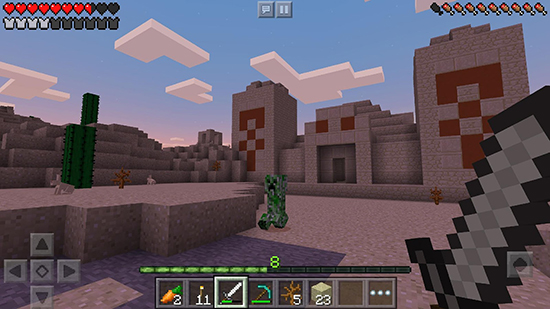 Minecraft itself is a bit of a divisive game—you likely either enjoy the game or you don’t—but if you’re a fan, there’s certainly no reason not to pick up the game, especially at such a low price when compared to the console and desktop versions. At less than 200mb, the game is a rather small download for such endless content too, meaning you’ll be able to keep the game on your device without worry about filling up space that could be used by other games, photos, movies, or music. Non-fans won’t be won over by this mobile port, but if you enjoy jumping into Mojang’s own virtual world, Minecraft: Pocket Edition is a must-have for hardcore and casual fans alike.
Minecraft itself is a bit of a divisive game—you likely either enjoy the game or you don’t—but if you’re a fan, there’s certainly no reason not to pick up the game, especially at such a low price when compared to the console and desktop versions. At less than 200mb, the game is a rather small download for such endless content too, meaning you’ll be able to keep the game on your device without worry about filling up space that could be used by other games, photos, movies, or music. Non-fans won’t be won over by this mobile port, but if you enjoy jumping into Mojang’s own virtual world, Minecraft: Pocket Edition is a must-have for hardcore and casual fans alike.
Compatible With




Originally released on the 3DS in 2016 in Japan and 2017 throughout the rest of the world, Monster Hunter Stories is a spin-off title from Capcom’s critically-praised Monster Hunter series that takes the series to all new places. While the typical core gameplay has been entirely changed, Monster Hunter Stories still remains purely based within the world of Monster Hunter, making it the first game in the series to arrive on Android. With all-new graphics, revamped gameplay based around touch controls, and a demo that takes you through the first chapter of the story for free, it’s time for all Monster Hunter fans and RPG-lovers alike to check this one out. At its core, the gameplay is completely different from the standard series. Unlike the traditional real-time action battles in most series that see you taking on monsters four times your size, you take the role of a younger rider, one who befriends monsters by helping to hatch their eggs. The babies you help to hatch can be taken into battle, where the main gameplay mechanic takes place: instead of real-time battles, you’ll find a turn-based RPG system here, built on top of a combat system that fuels both you and your companion monster in to attack the enemy. That’s right: Monster Hunter Stories plays like Monster Hunter crossed with Pokemon, and that’s just one reason to jump into the game. 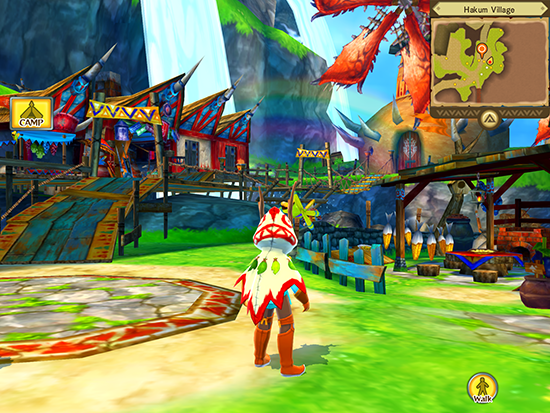 Here’s how the battle system works: as the player, you control your rider and your monster, both of whom have attacks that are based on power, speed, or technique. Each of these defeats another, similar to rock-paper-scissors or the classic grass-fire-water starters in each generation of Pokemon. The player has a choice of four weapons (narrowed down, unfortunately, from the wide array of weapons we’re used to seeing in Monster Hunter; thankfully, the Hunting Horn, a personal favorite, makes an appearance here), that allows you to attack in specific ways and access various skills on your device. This battle system is excellent, and it comes accompanied by your typical array of RPG elements. Like most Monster Hunter games, there’s a full character creator available, though the choices aren’t quite as customizable as in the mainline games. A full story surrounding the mythology of the Monster World is here as well, and while it’s nothing groundbreaking, we quite enjoyed what we saw. Whether you’re new to the Monster Hunter World or you’re looking for a new experience within a series of games you love, it is absolutely worth picking up on Android. At just $20 for a full RPG that was originally sold for $39.99, it’s an excellent deal. Plus, with that trial available for download, you can check out the first chapter of the game before dropping down some cash.
Here’s how the battle system works: as the player, you control your rider and your monster, both of whom have attacks that are based on power, speed, or technique. Each of these defeats another, similar to rock-paper-scissors or the classic grass-fire-water starters in each generation of Pokemon. The player has a choice of four weapons (narrowed down, unfortunately, from the wide array of weapons we’re used to seeing in Monster Hunter; thankfully, the Hunting Horn, a personal favorite, makes an appearance here), that allows you to attack in specific ways and access various skills on your device. This battle system is excellent, and it comes accompanied by your typical array of RPG elements. Like most Monster Hunter games, there’s a full character creator available, though the choices aren’t quite as customizable as in the mainline games. A full story surrounding the mythology of the Monster World is here as well, and while it’s nothing groundbreaking, we quite enjoyed what we saw. Whether you’re new to the Monster Hunter World or you’re looking for a new experience within a series of games you love, it is absolutely worth picking up on Android. At just $20 for a full RPG that was originally sold for $39.99, it’s an excellent deal. Plus, with that trial available for download, you can check out the first chapter of the game before dropping down some cash.
Compatible With




Mobile games have tried to service every imaginable genre in the gaming-sphere, but puzzle games somehow seem to be the absolute peak of the platform. That isn’t a bad thing, either; rather, it’s an ode to how well puzzle games have adapted to the current ecosystem that it’s so easy to get lost in them for a moment. Puzzle games also allow for nearly unlimited options in what puzzles are presented to you. On this list alone, we’ve highlighted a 3D-escape room-style puzzle game, a sliding card game, and a classic block game that requires you to find brick’s way out of a maze. Monument Valley, however, is far more than a simple puzzle game. This one focuses almost exclusively on setting a sense of atmosphere and tone, forcing you to focus on the story as much as the puzzle put in front of you. The driving story behind the game is simple, putting you, the player, in charge of guiding a princess through a world full of difficulties, trials, and tribulations. From castles and countrysides to dreamscapes and surreal environments, Monument Valley is jam-packed with interesting environments and puzzles, and the game feels largely similar to something like FEZ, where you traverse through environmental puzzles around a 2.5D world. Much of the game draws its appeal from the sights and sounds—we can’t overplay how truly beautiful this game is, with incredible graphics and design and a painting-like world in every stage. In many ways, the puzzles are simply excuses to explore the world. The game asks for it to be played with headphones equipped, and it’s obvious why: the gorgeous sound setting is every bit as important as the minimal, gorgeous designs of the environment. 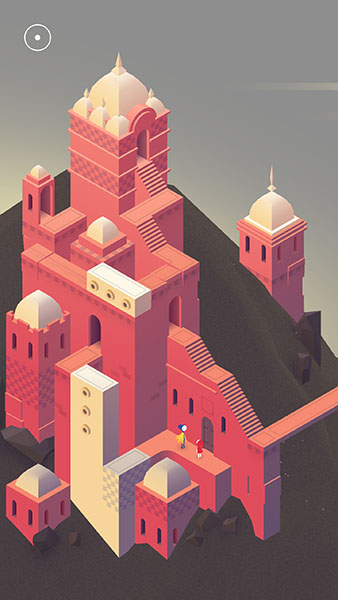 As mentioned, Monument Valley tells a story during your time with the game, though it’s mostly told through unspoken cues spread throughout the world. This isn’t the type of story that’s being told through dialogue or cutscenes; rather, it’s hidden away, ready for those who want to see what’s happening inside the world. The game isn’t incredibly long, with most playthroughs clocking in at about an hour to an hour and a half, but that doesn’t mean Monument Valley isn’t a must-play. At $3.99, it is a bit steep for the limited gameplay time, depending on what you’re looking for in a mobile title, but from the gorgeous landscape to the emotional story, playing through the game was absolutely worth the cost of a movie rental at the same price. Monument Valley 2, a direct sequel released for both iOS and Android in 2017, is also available for the same price of $3.99. If you already played the first Monument Valley and you’re hungry for more from this team of designers, you’ll want to check out the sequel, previously featured on a round-up of the best apps of the month.
As mentioned, Monument Valley tells a story during your time with the game, though it’s mostly told through unspoken cues spread throughout the world. This isn’t the type of story that’s being told through dialogue or cutscenes; rather, it’s hidden away, ready for those who want to see what’s happening inside the world. The game isn’t incredibly long, with most playthroughs clocking in at about an hour to an hour and a half, but that doesn’t mean Monument Valley isn’t a must-play. At $3.99, it is a bit steep for the limited gameplay time, depending on what you’re looking for in a mobile title, but from the gorgeous landscape to the emotional story, playing through the game was absolutely worth the cost of a movie rental at the same price. Monument Valley 2, a direct sequel released for both iOS and Android in 2017, is also available for the same price of $3.99. If you already played the first Monument Valley and you’re hungry for more from this team of designers, you’ll want to check out the sequel, previously featured on a round-up of the best apps of the month.
Compatible With




This list has RPGs, strategy games, puzzle and platformer adventures, and so much more—it’s only fair we also include one of the most popular game genres from the last half-decade of gaming. The roguelike, named after the classic 1980s game Rogue, has blown up in popularity thanks to games like Spelunky, The Binding of Isaac, and FTL: Faster Than Light. Roguelikes are defined by their dungeon crawling, procedurally-generated game levels, and permanent death of the player character. While some of the more popular roguelikes have stayed on their original platforms instead of expanding to mobile, the genre has seen some success on iOS and Android devices, and Pixel Dungeon is one of the best examples of the genre done right on mobile devices. In a nutshell, Pixel Dungeon is a pretty straightforward roguelike. Your character makes their way through the dungeon, battling monsters and creatures within the depths of a dungeon, all rendered in pixel-art that gives the game a strong retro vibe throughout. The game features twenty-five different randomly generated levels, each with their own creatures to battle and defeat. The game is turned-based, with each turn spent moving around the grid-based dungeon levels looting and battling. Every single movement or action uses up a phase within your turn, so you have to be alert and ready to battle at any moment. This isn’t a game where you can be careless with your actions. Every move matters. Movement is based on a tapping interface as you move around the platforms. Each level has assorted weapons, treasure, and other assorted powerups to do more damage to the bosses and enemies throughout the levels. ![]() Overall, Pixel Dungeon is a great on-the-go addition to any roguelike-lover’s collection. The game certainly isn’t perfect, but it’s fun to blast through levels even when you’re on the go. While some roguelikes, such as The Binding of Isaac, have expanded to mobile consoles like the Nintendo Switch, with our phones still the most accessible way to play games on the move, there’s no reason not to keep Pixel Dungeon on your phone for when you’re missing that roguelike grind.
Overall, Pixel Dungeon is a great on-the-go addition to any roguelike-lover’s collection. The game certainly isn’t perfect, but it’s fun to blast through levels even when you’re on the go. While some roguelikes, such as The Binding of Isaac, have expanded to mobile consoles like the Nintendo Switch, with our phones still the most accessible way to play games on the move, there’s no reason not to keep Pixel Dungeon on your phone for when you’re missing that roguelike grind.
Compatible With




Plants vs. Zombies 2 (also known as Plants vs. Zombies 2: It’s About Time), is a mobile game first released on iOS in 2013, a sequel to the original Plants vs. Zombies game released in 2009. Like the first PvZ game, Plants vs. Zombies 2 is a tower defense game, where you use your army of plants to combat zombies from attacking your garden. The original game was critically acclaimed at the time of release, and if you enjoyed the first one, you’ll probably love the second title—albeit with some possible reservations about the game’s money-making strategy and the freemium model used by new PvZ owners Electronic Arts. In terms of gameplay, not much has changed between the first and second Plants vs. Zombies games. You’re still looking at an acutely animated tower defense game, where your goal is to use your garden of plants to stop the ever-encroaching army of zombies coming to invade your home. Plants are divided into offensive and defensive types, with special utilities and tools able to power up or defend your army of plants. The biggest advancement in PvZ2 comes from the new worlds and environments, including new worlds like ancient Egypt and the wild west. The game also includes new power-ups not featured in the original, also allowing for new variants in gameplay. And overall, we found the game to have a good balance between ease-of-use and challenge, with the difficulty curve presented being fairly easy to acclimate to overall. 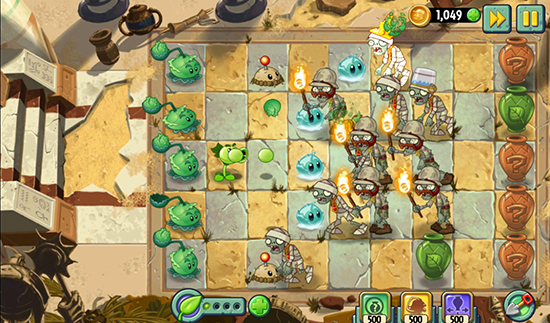 If you’re a fan of tower defense games and don’t mind the cutesy graphics offered by Plants vs. Zombies (which might turn off some potential players), Plants vs. Zombies 2 is an excellent addition to a growing genre. The biggest flaw with the game comes from its controversial freemium plan on both iOS and Android. While more players might be able to play thanks to the low cost of entry, some might find the in-app purchases within the game to be a bit too steep for what they offer. Still, for a free game, Plants vs. Zombies 2 fulfills everything players would want out of a sequel without really offering much more. It’s a great game, but for players of the first who grew bored after hours of gameplay, there might not be enough here to make the game feel new again.
If you’re a fan of tower defense games and don’t mind the cutesy graphics offered by Plants vs. Zombies (which might turn off some potential players), Plants vs. Zombies 2 is an excellent addition to a growing genre. The biggest flaw with the game comes from its controversial freemium plan on both iOS and Android. While more players might be able to play thanks to the low cost of entry, some might find the in-app purchases within the game to be a bit too steep for what they offer. Still, for a free game, Plants vs. Zombies 2 fulfills everything players would want out of a sequel without really offering much more. It’s a great game, but for players of the first who grew bored after hours of gameplay, there might not be enough here to make the game feel new again.
Compatible With




Be honest with yourself: you spent most of the last summer playing through Pokemon Go, only to be secretly disappointed the game didn’t offer more than what was essentially a mobile game with lots of swipes and taps. While the game truly was a phenomenon, it wasn’t quite the traditional Pokemon experience many of us had grown used to since the days of the original Game Boy in the late 1990s. Sure, Go was innovative in plenty of ways, but the battle system left a lot to be desired overall. Where were the story, the training, and everything else players had grown used to within the game? Luckily, Adult Swim and the team behind Rick and Morty, of all groups, have brought us a game that feels nearly identical to that same Pokemon dopamine rush we get when playing new games, while simultaneously delivering the mobile experience Nintendo and Game Freak refuse to bring to the party. While other licensed Pokemon games like Pokemon Duel and Magikarp Jump may exist as fun spin-off games, only Pocket Mortys, the first mobile game from the Adult Swim cartoon, can bring the gameplay we’ve been looking for—all while featuring characters and settings from the popular adult animated sitcom of the same name. 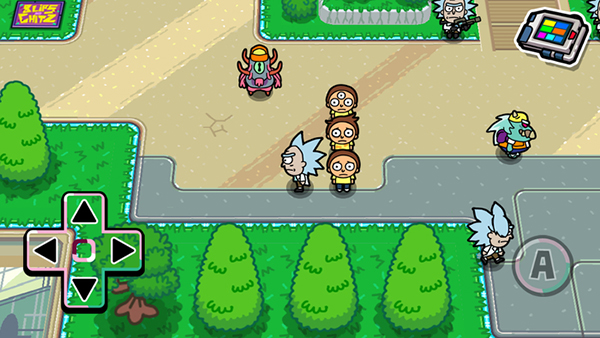 Pocket Mortys is a free ad and in-app purchase-supported game set within the universe of Rick and Morty. You play as Rick, the titular Drunken-Doc-Brown-Esque main character of the show, as you and Morty enter the multiverse. To no one’s surprise, Rick begins collecting other universes’ Mortys with his Mortypad, a Pokedex-like contraption, and using them to battle with a game system that is almost an exact take on what we’ve seen from Pokemon. Overall, the whole thing is pretty silly. But the writing matches the tone of the show, and the game uses a simplified version of Pokemon’s type-system by literally identifying Mortys as rock, paper, or scissors-type. It’s not the deepest gameplay you’ll find on this list, but if you’re a fan of the show, it should keep you occupied until season three returns this summer.
Pocket Mortys is a free ad and in-app purchase-supported game set within the universe of Rick and Morty. You play as Rick, the titular Drunken-Doc-Brown-Esque main character of the show, as you and Morty enter the multiverse. To no one’s surprise, Rick begins collecting other universes’ Mortys with his Mortypad, a Pokedex-like contraption, and using them to battle with a game system that is almost an exact take on what we’ve seen from Pokemon. Overall, the whole thing is pretty silly. But the writing matches the tone of the show, and the game uses a simplified version of Pokemon’s type-system by literally identifying Mortys as rock, paper, or scissors-type. It’s not the deepest gameplay you’ll find on this list, but if you’re a fan of the show, it should keep you occupied until season three returns this summer.
Compatible With
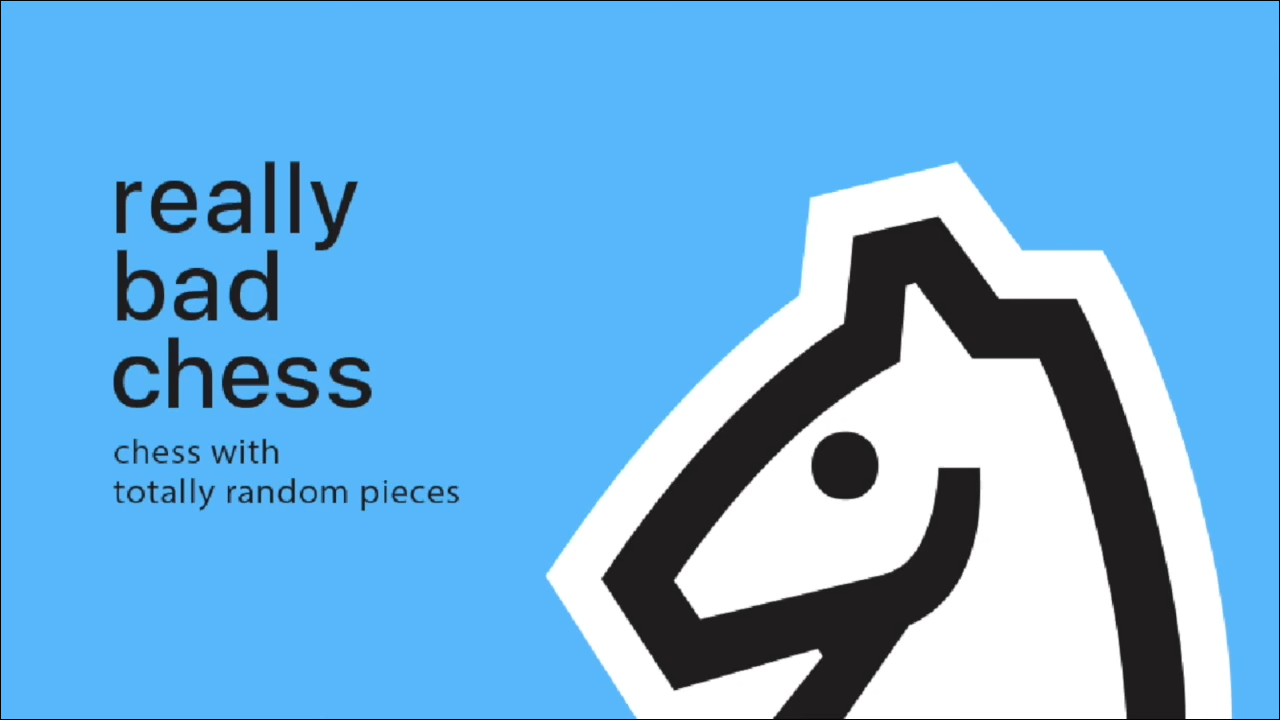
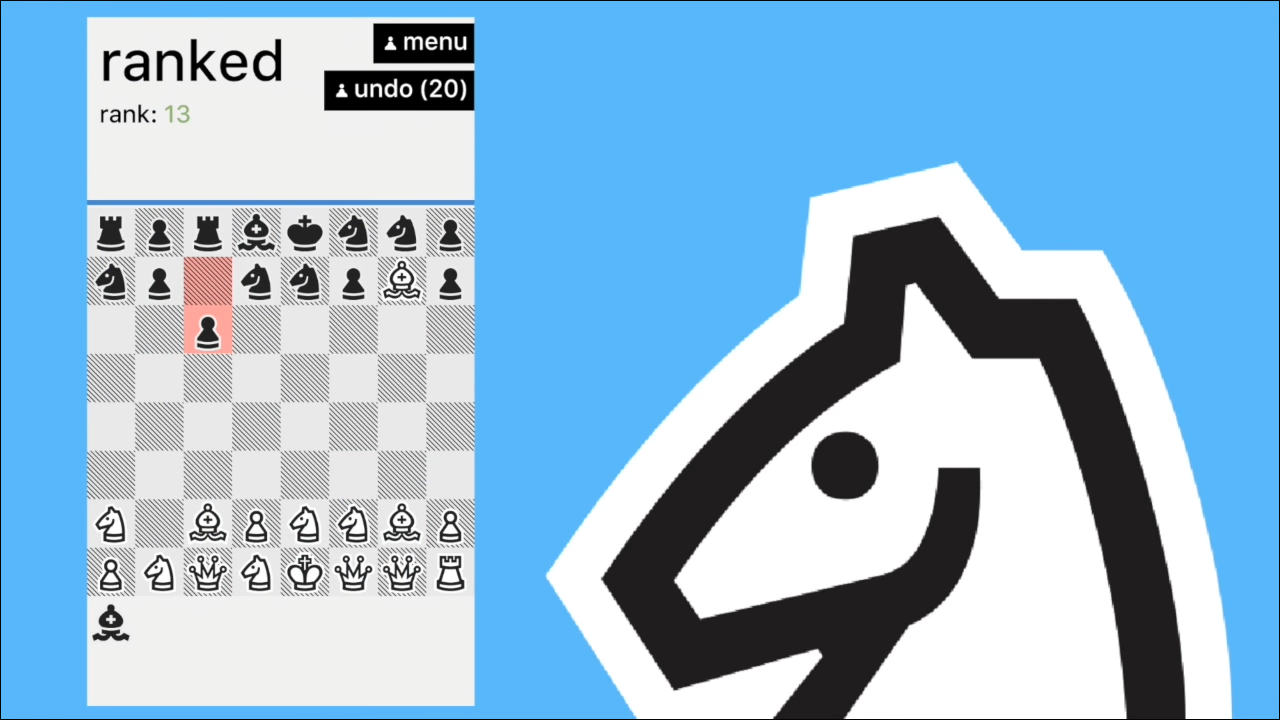
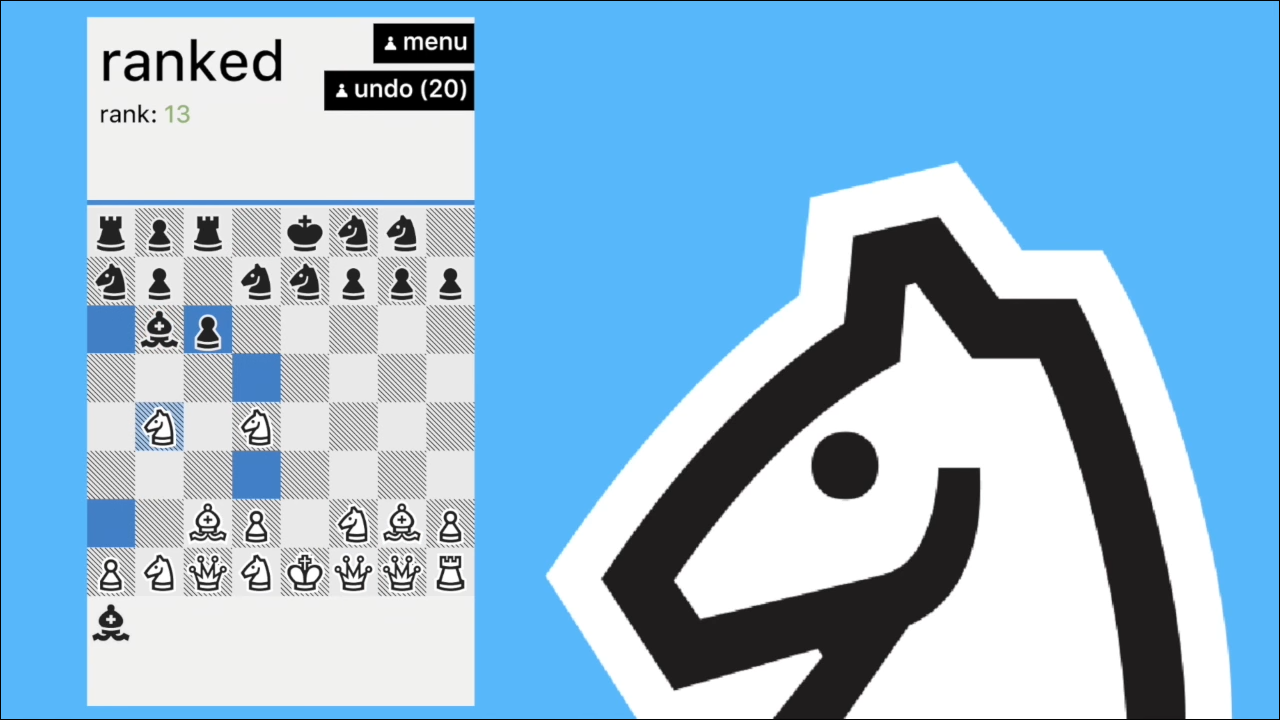
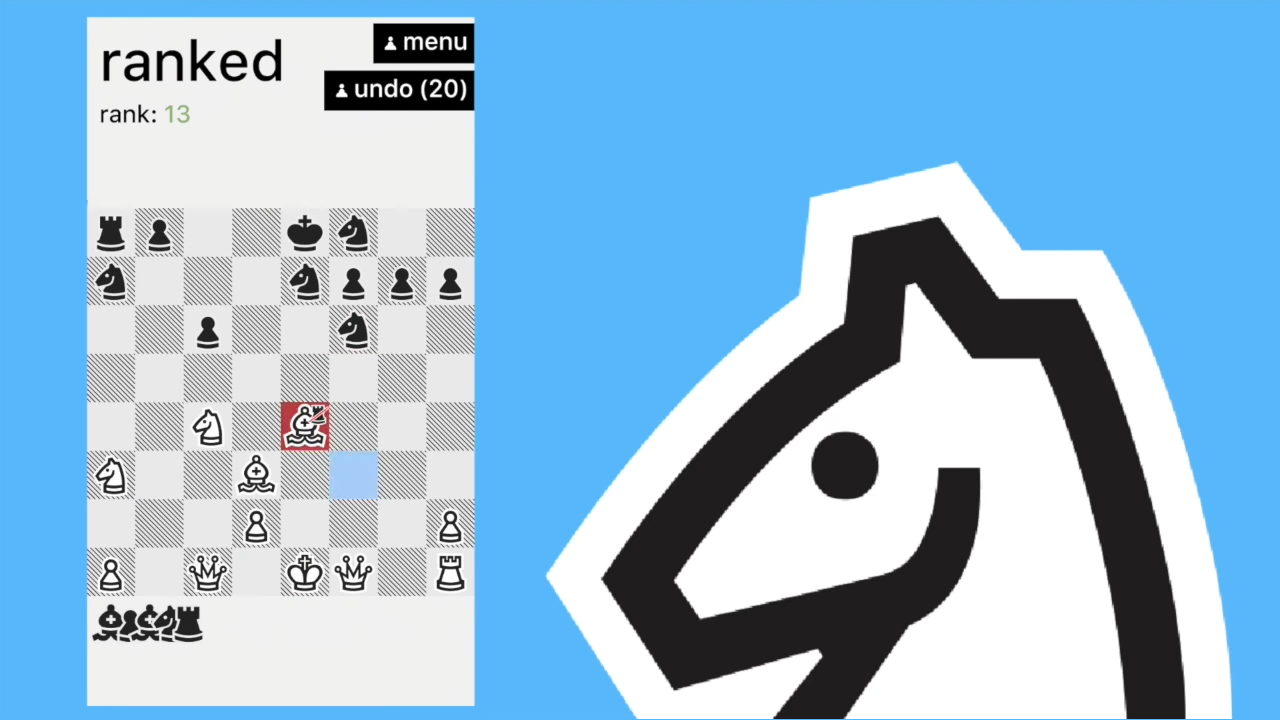
Really Bad Chess is the complete chess package. It’s a tutorial for traditional chess, the worst chess game you’ve ever played, and the chess app you didn’t know you wanted. The game is a simple idea—so simple, it’s incredible Really Bad Chess was created as a mobile game. Here’s the gist of the app: instead of featuring a traditional game of chess, Really Bad Chess rearranges and scrambles the board, giving you an entirely new set of pieces each time. In the first game, you might have three pawns, five queens, and a single bishop. Meanwhile, the next game might have seven pawns, two queens, and four rooks. You never know what’s going to happen in Really Bad Chess—your only constant is the singular king, with the goal of RBC still to capture your opponent’s king through checkmate. The pieces received at the beginning aren’t entirely random; they’re based on your past experience playing the game. The better you do, the worst your pieces will get over time, making the game infinitely more challenging and eventually causing you to either get better at the basic strategy of chess to overcome the restrictions placed on you by the game or fail and lose your winning streak. Though the subtitle, “a definitely balanced chess game,” is certainly tongue in cheek, the game works as well as it does because of its imbalance, not in spite of it. You or your opponent will always have an upper-edge, encouraging the player to learn advanced chess strategies to complete the necessary plays to win. Your first couple of games of Really Bad Chess might seem incredibly easy, but it’s a trap—albeit one encouraging you to keep playing the game to get better. 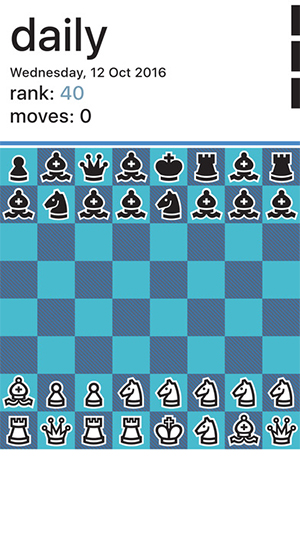 On iOS and Android, the free version of Really Bad Chess allows you to play against an AI in ranked or daily challenges, while an in-app purchase of $2.99 unlocks versus mode for co-op with another person and removes ads. The game is incredibly fun, and if you find yourself enjoying it, the developer Zach Gage has a bunch of other games available on iOS, including this year’s Typeshift, Spelltower (also available on Android), and Ridiculous Fishing (also available on Android).
On iOS and Android, the free version of Really Bad Chess allows you to play against an AI in ranked or daily challenges, while an in-app purchase of $2.99 unlocks versus mode for co-op with another person and removes ads. The game is incredibly fun, and if you find yourself enjoying it, the developer Zach Gage has a bunch of other games available on iOS, including this year’s Typeshift, Spelltower (also available on Android), and Ridiculous Fishing (also available on Android).
Compatible With
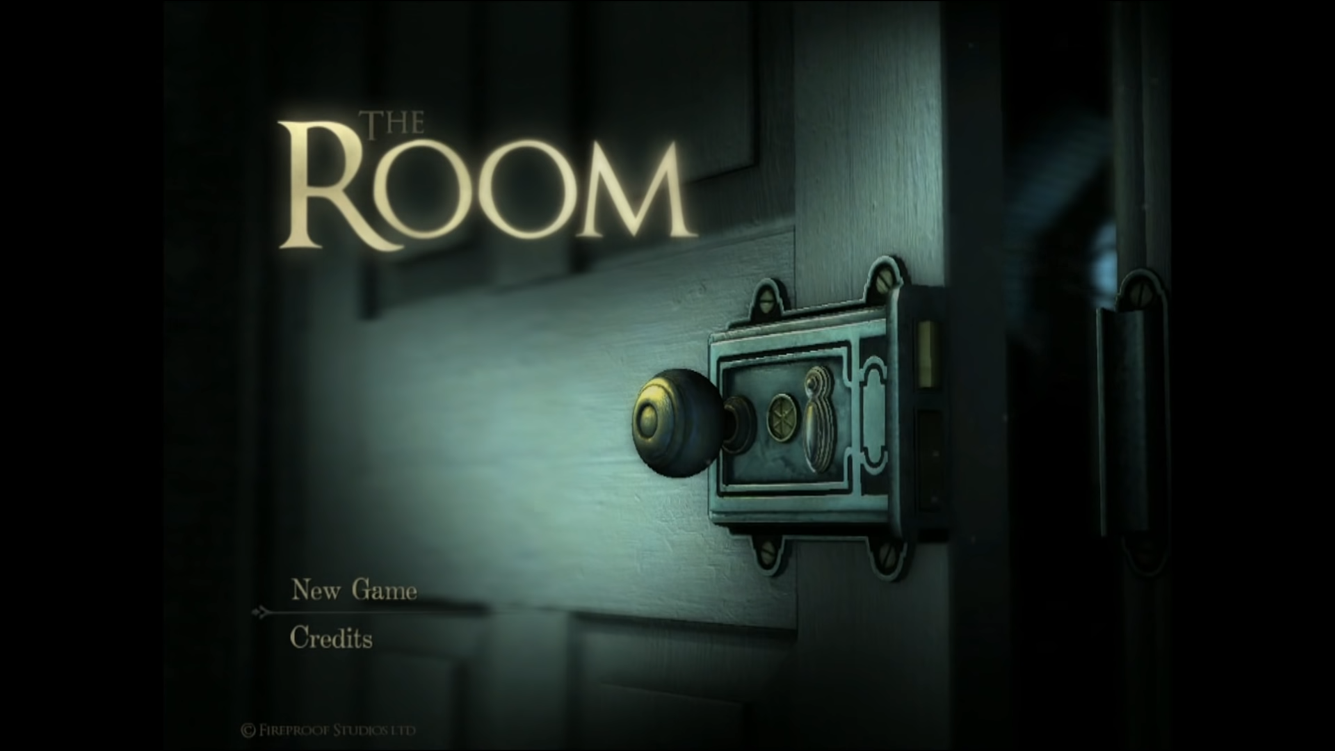
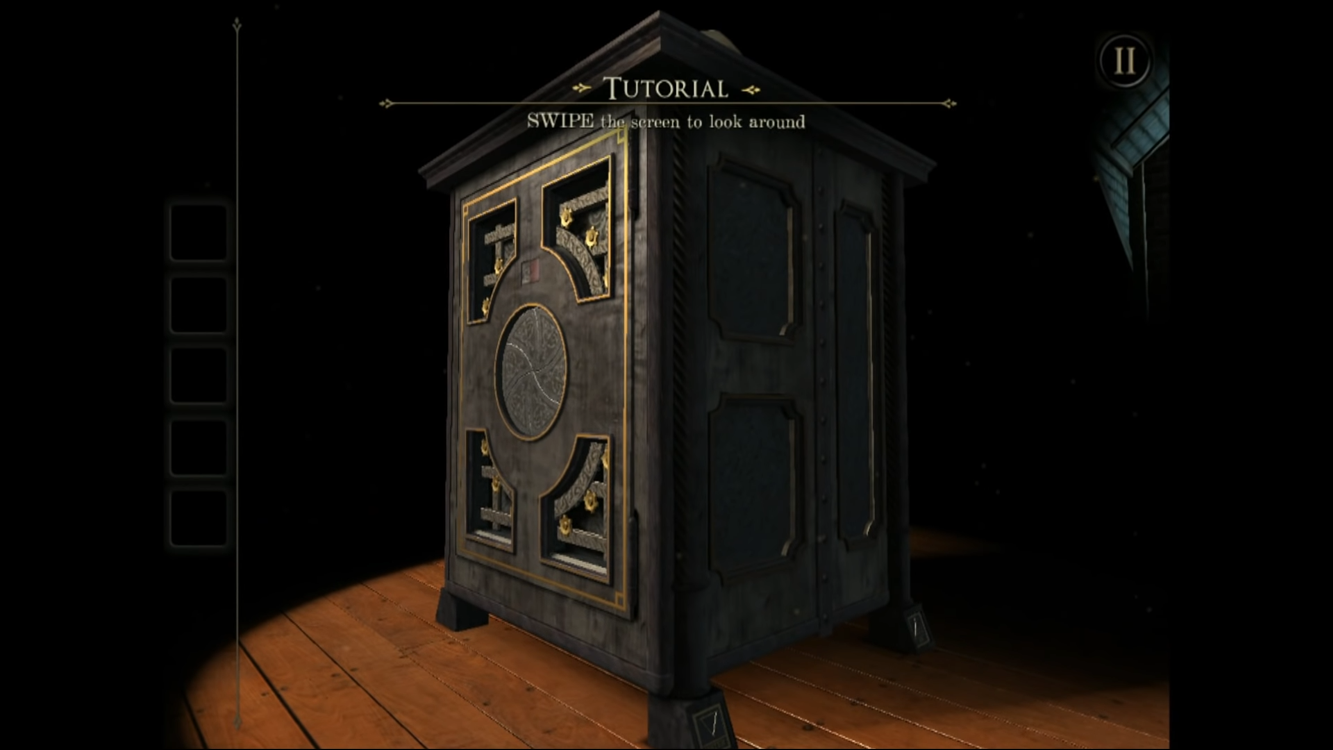
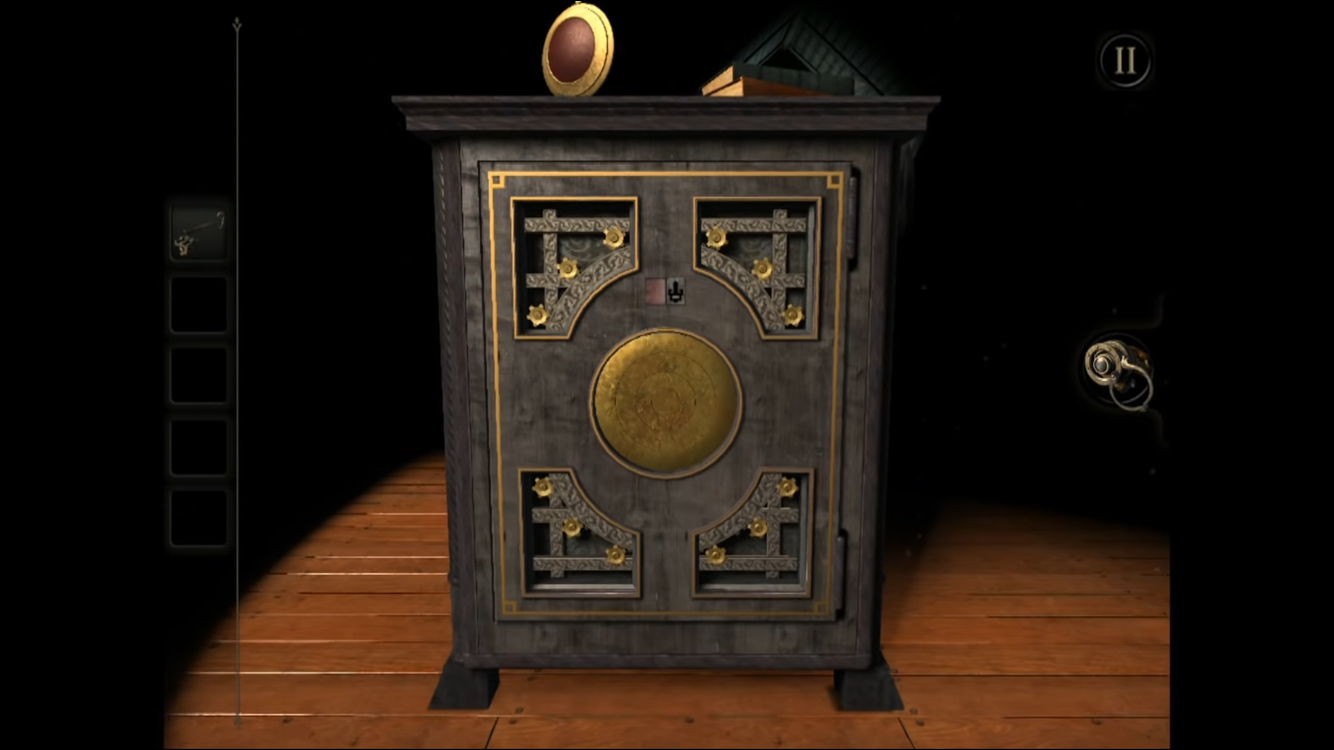
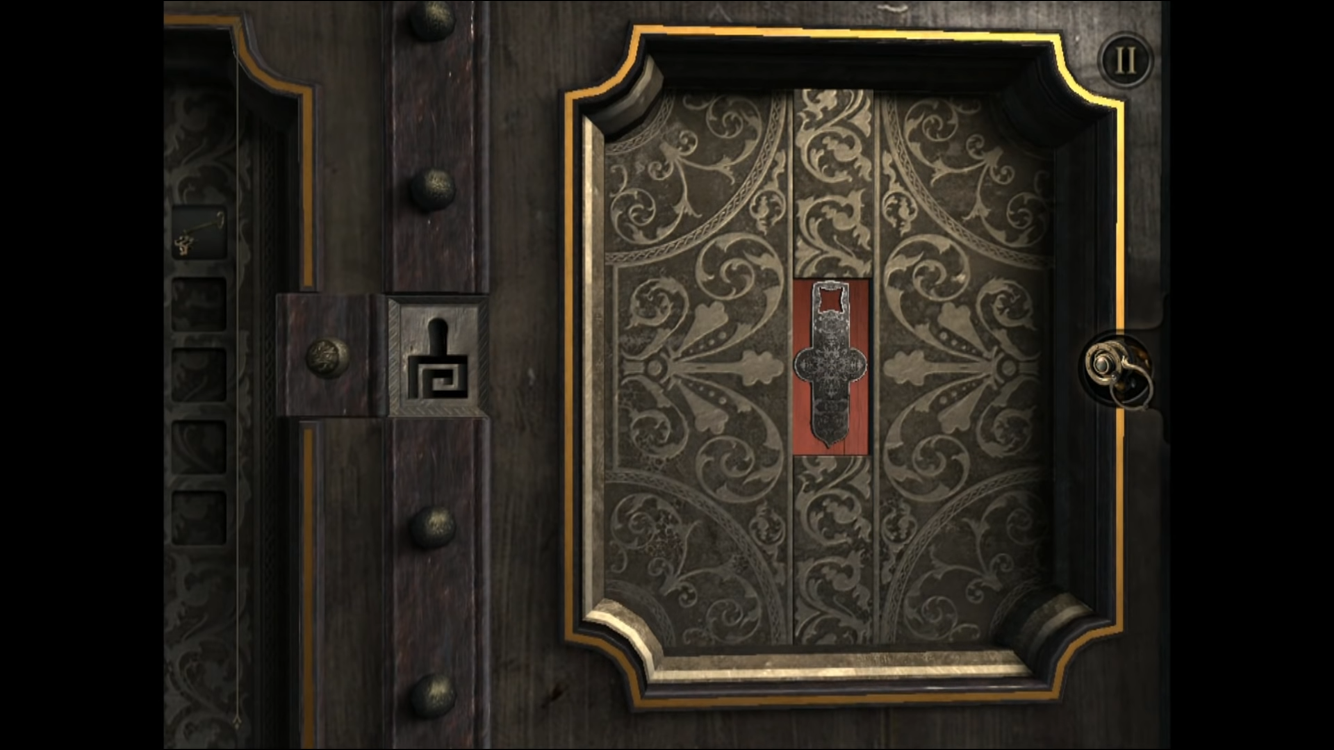
Sorry to disappoint, but The Room isn’t an adaptation of the “worst film ever made” of the same name. Instead, The Room resembles a virtual escape room, a puzzle game where, as the player, you’re given a series of boxes that have a number of unlocking mechanisms on them. This might sound simple enough, but the game truly uses every part of your phone to recreate the experience and make you use every tool at your disposal to solve a puzzle. Though the game’s a few years old now, it’s massively successful and has inspired a full series of games to play on the go. If you’re into atmospheric, innovative puzzle games, you’ll love The Room. Let’s take a look at why. Instead of any number of similar puzzle games, The Room is a fully 3D puzzle game where the mission is to solve four puzzle boxes in a row. There’s a story involved, mostly told through letters and notes from a mysterious author who’s invented the puzzle boxes you’re being sent. The box can be turned, twisted, zoomed in and out, rotated, and more—all while looking for clues on how to solve the boxes. You also gain access to lens that allows you to see specific objects within the box made from a “null” element that relate directly back to the story—all while helping you solve the puzzles at hand to move onto the next box. 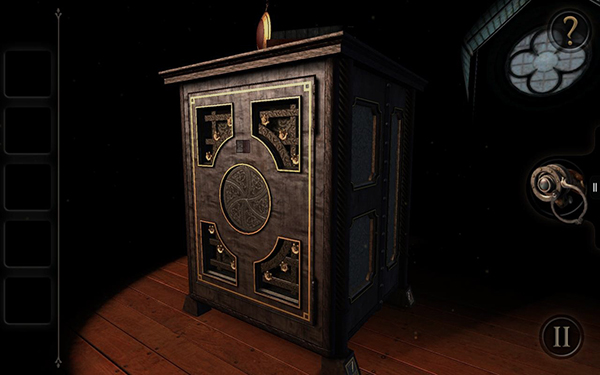 If you try The Room and find yourself enjoying it but disappointed with the short length of the game—about two and a half hours to beat on average—here’s the good news: The Room has a series of sequels on both iOS and Android released in 2013 and 2015, respectively, that continue the puzzle fun of the first one. A new sequel, titled “The Room: Old Sins” has also been announced for mobile devices for a 2017 release, so now’s a perfect time to catch up on the story and the gameplay before continuing the saga later this year.
If you try The Room and find yourself enjoying it but disappointed with the short length of the game—about two and a half hours to beat on average—here’s the good news: The Room has a series of sequels on both iOS and Android released in 2013 and 2015, respectively, that continue the puzzle fun of the first one. A new sequel, titled “The Room: Old Sins” has also been announced for mobile devices for a 2017 release, so now’s a perfect time to catch up on the story and the gameplay before continuing the saga later this year.
Compatible With




Those who have played popular endless runners in the past will be familiar with the game style of Run Sausage Run. Designed around dodging obstacles, the entire goal of the game is to endlessly work your way towards high scores. You control a sausage, who has two choices in how he moves: running quickly while ducking back, and moving slowly while standing straight up. To run and duck, you just hold your finger down on the touchscreen, making your way through challenges like blades, hammers, saws, and more. The game is reminiscent of the same style of meat-violence as Super Meat Boy, a difficult, fast platformer released for consoles in 2010. All things considered, Run Sausage Run is a stylish addition to the overstuffed genre of endless runners. Games like Temple Run and Subway Surfers are popular as hell, but the style of art displayed in those games is boring at best and downright bad in some cases. Run Sausage Run, on the other hand, has a 2D cartoonish style that is bright, vivid, and looks fantastic on smartphone displays. The music is charming and catchy as well (you can check out what it sounds like in the game’s trailer here), which helps to deliver on a feeling of fun that exudes from the application. It’s impossible not to smile a little while playing the game, even as your sausage is destroyed again and again throughout the game. There’s also a ton of skins for your main character, and the game actually gives them to you for free a lot. Like, nearly every one of your early runs will allow you to unlock a new skin. It’s impressive. 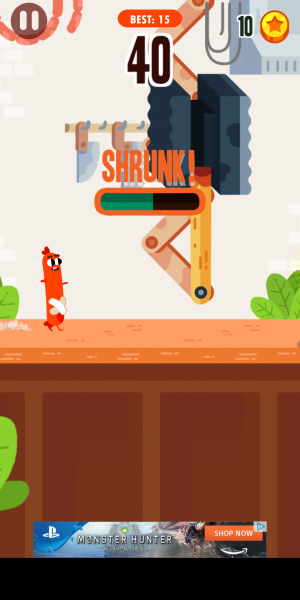 That doesn’t mean there aren’t the standard ads and in-app purchases of course, though everything here is actually surprisingly on the level. The most expensive in-app purchase is $7.99, far lower than the $99.99 (or more) in-app purchases some of these games offer. There’s a good amount of ads, but one $.99 in-app purchase removes them, and since all other in-app purchases only reward you with coins that you can use to purchase skins (coins that can be earned by simply playing the game), it’s genuinely easy to have a good experience on this app. Honestly, Run Sausage Run! is a decent timewaster to add to your device, especially for those of us looking to not spend a single cent on a game. Definitely check this one out (if you haven’t already).
That doesn’t mean there aren’t the standard ads and in-app purchases of course, though everything here is actually surprisingly on the level. The most expensive in-app purchase is $7.99, far lower than the $99.99 (or more) in-app purchases some of these games offer. There’s a good amount of ads, but one $.99 in-app purchase removes them, and since all other in-app purchases only reward you with coins that you can use to purchase skins (coins that can be earned by simply playing the game), it’s genuinely easy to have a good experience on this app. Honestly, Run Sausage Run! is a decent timewaster to add to your device, especially for those of us looking to not spend a single cent on a game. Definitely check this one out (if you haven’t already).
Compatible With




On the surface, Shadow Fight 2 is a standard 2D mobile fighting game, with all the pros and cons that come with mobile games from the typically-complex fighting genre. The game is simplified as compared to console counterparts like Street Fighter, Tekken, or Mortal Kombat, but it’s still enjoyable when it works. The game has a distinct art style, where – if you paid attention to the title—the fighters are completely obscured in shadows, creating a silhouette effect on every single fighter in the game. What makes Shadow Fight 2 a bit different than some of the other fighting games on other mobile platforms are the addition of RPG elements to make the game a bit more interesting. First, fighting. Anyone who is a fan of top-tier fighting games is going to be disappointed here. The game uses a virtual joystick and a two-button system—one for kicking and another for punching—to battle your opponents. It’s a good fighting system for beginners and button mashers, but competitive players are going to be dismayed with what’s offered here. The animations are incredibly smooth on both iOS and Android, though again, the visuals won’t impress every player on the App Store or Play Store. The RPG elements come in when you begin adding powerups and levels, a progression system for you to make your way through the game. It’s a nice addition, differentiating it well from the other simple fighting games on each respective app market. Weapons can be switched out within the shop, and there’s a branching ability path to follow and customize with. 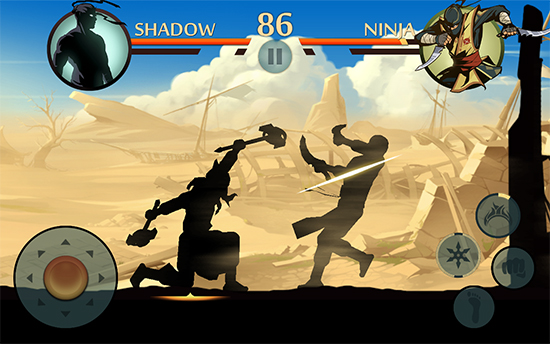 The biggest problem with Shadow Fight 2 is, unsurprisingly, the poor implementation of free-to-play mechanics that have been known to curse so many games. Fights are routinely interrupted by “energy warnings” that cause you to either pay to continue your progression through the game or wait a certain amount of time until you can continue battling. This gives players an extremely frustrating situation when they can’t make quick progress throughout the game. You can gain free gems by watching ads, but we found them to be buggy and unstable within the app. The ads often cause crashes, slowdowns, or additional battery drain. Still, it’s one of our favorite fighting games on the platform, and more than worth dealing with the terrible freemium mechanics built-in. We’d love to see a Shadow Fight 3 that manages these money-making plans a little more responsibly. Still, Shadow Fight 2 is one of the best fighting games on the Play Store or App Store—even if it is in spite of itself.
The biggest problem with Shadow Fight 2 is, unsurprisingly, the poor implementation of free-to-play mechanics that have been known to curse so many games. Fights are routinely interrupted by “energy warnings” that cause you to either pay to continue your progression through the game or wait a certain amount of time until you can continue battling. This gives players an extremely frustrating situation when they can’t make quick progress throughout the game. You can gain free gems by watching ads, but we found them to be buggy and unstable within the app. The ads often cause crashes, slowdowns, or additional battery drain. Still, it’s one of our favorite fighting games on the platform, and more than worth dealing with the terrible freemium mechanics built-in. We’d love to see a Shadow Fight 3 that manages these money-making plans a little more responsibly. Still, Shadow Fight 2 is one of the best fighting games on the Play Store or App Store—even if it is in spite of itself.
Compatible With




The Sorcery! series is actually composed of four distinct games, and you’ll want to make sure you play them in order to get the full experience. Sorcery! is based on the fantasy gamebook series by Steve Jackson. It operates as a four-part single-player experience where the player battles monsters and other NPCs while making choices and following along with the story. Originally published in the 1980s, Sorcery! plays quite a bit like a single-player version of Dungeons and Dragons, but with an entirely new combat system based around using spells with three-letter combinations that require certain prerequisites. The iOS and Android versions of the Sorcery! books are incredible, with the same fantastic writing built right in. You also can’t miss the beautiful animation and pieces of art within the app. The game plays like a cross between a video game and a novel. The game opens with text, much like a book, as you read along to discover the backstory and the setup for what’s about to unfold. Below these excerpts of text, you’ll see a map of the world, complete with a chess-like figure that you drag around the storybook-like setting to objectives and markers on the map. The game presents you with markers on your map, displaying where you can and can’t go. Once you arrive at a marker, the story will continue unfolding in text format, describing the ongoings of your character and the surrounding NPCs. For example, when you go to test your battle skills, you speak with the master who’s about to teach you everything you need to know. The story also gives you dialogue options as you speak, similar to modern RPGs like The Witcher 3 or Persona 5. As mentioned above, Sorcery!’s combat is unlike anything else we’ve seen on mobile, with a focus on sliding your character forwards and backwards to determine a power level before striking with your sword (in addition to those aforementioned spell words). 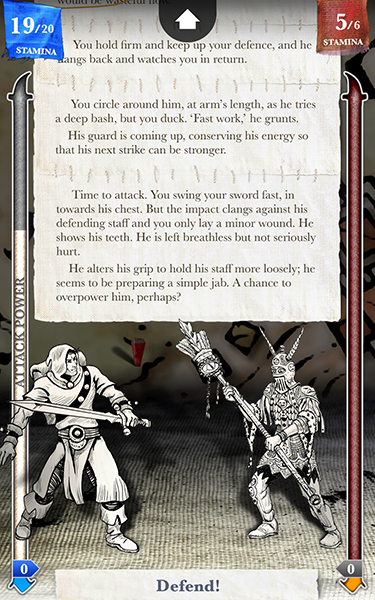 As for the general presentation, the game goes above and beyond. The illustrations, both in and out of battle in this game, are something truly to marvel at. The art style is traditional fantasy, spawning from 70s and 80s tabletop RPGs, and it looks absolutely great. If you’re a fan of classic fantasy, you will find this game to be amazing. The music, when it plays, is gorgeous, but it doesn’t play often enough to truly leave the mark it deserves. As mentioned, the writing is phenomenal—certainly perfect for the nostalgia-based fantasy the game is bringing back. Sorcery! is one of those games that seems like such an obvious idea—mix fantasy RPG elements with literal CYOA storytelling—but to see it in action is truly a wonder. Each game in the series clocks in at $4.99, and if you like the first one, you should absolutely move forward to the next three to finish the story.
As for the general presentation, the game goes above and beyond. The illustrations, both in and out of battle in this game, are something truly to marvel at. The art style is traditional fantasy, spawning from 70s and 80s tabletop RPGs, and it looks absolutely great. If you’re a fan of classic fantasy, you will find this game to be amazing. The music, when it plays, is gorgeous, but it doesn’t play often enough to truly leave the mark it deserves. As mentioned, the writing is phenomenal—certainly perfect for the nostalgia-based fantasy the game is bringing back. Sorcery! is one of those games that seems like such an obvious idea—mix fantasy RPG elements with literal CYOA storytelling—but to see it in action is truly a wonder. Each game in the series clocks in at $4.99, and if you like the first one, you should absolutely move forward to the next three to finish the story.
Compatible With




If you’re unfamiliar with Star Wars: Knights of the Old Republic (or KOTOR, for short), the game has a long, illustrious history behind it. First released in 2003 for Windows and the original Xbox, KOTOR was developed by legendary RPG maker Bioware, responsible for the Baldur’s Gate series in the late 90s and perhaps best known for creating Mass Effect in 2007. In many ways, KOTOR functions primarily like a prototype for what would become Mass Effect, complete with a space mission setting (taking place thousands of years prior to the Star Wars movies), branching storylines, and dialogue trees that would become standard for RPGs beginning with the first Mass Effect game four years later. The iOS and Android ports of KOTOR are full games, and though they may seem expensive at first glance, for your $9.99 you’re getting an RPG unlike any other on mobile devices. KOTOR opens four thousand years before the original films, where the player takes on the role of a Republic soldier. From there, you can pick your class, grab your equipment, and begin playing through the game. Combat is round-based instead of action-based, meaning you select your target and the character takes care of the rest. You can change direction at any time, reselecting commands or stopping to heal as you need. As you make decisions throughout the game, you’ll find your character leaning towards the dark or light side depending on your actions at any given time. KOTOR has been praised not just for its gameplay, but for its storytelling and strong focus on great twists and turns throughout the story. We don’t want to give anything away, but there will be times throughout the story where you find yourself shocked. It’s that good. 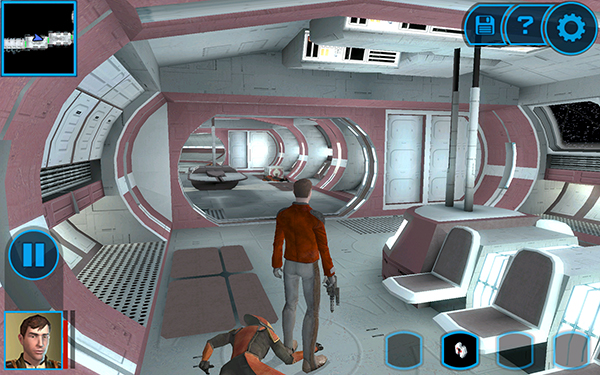 Though some may be worried about the touch controls in a game designed for a controller or mouse and keyboard, you can put those concerns mostly aside. Though the game isn’t perfect when it comes to controls—swiping around and tapping to move can, occasionally, be difficult—the menu system works well and overall there weren’t any serious control problems while testing. Even better, both the iOS and Android versions support MFi and Bluetooth controllers, respectively, so you can experience the game just how it was meant to be played. At $9.99 and over a gigabyte in file size, KOTOR might seem like a pretty heavy investment. But if you’re looking for something serious to play in the back of a car, or you want something with some serious replay value, KOTOR is in a class of its own on mobile. This game is truly worth the investment, especially if you’re a fan of Star Wars, Bioware, or RPGs in general.
Though some may be worried about the touch controls in a game designed for a controller or mouse and keyboard, you can put those concerns mostly aside. Though the game isn’t perfect when it comes to controls—swiping around and tapping to move can, occasionally, be difficult—the menu system works well and overall there weren’t any serious control problems while testing. Even better, both the iOS and Android versions support MFi and Bluetooth controllers, respectively, so you can experience the game just how it was meant to be played. At $9.99 and over a gigabyte in file size, KOTOR might seem like a pretty heavy investment. But if you’re looking for something serious to play in the back of a car, or you want something with some serious replay value, KOTOR is in a class of its own on mobile. This game is truly worth the investment, especially if you’re a fan of Star Wars, Bioware, or RPGs in general.
Compatible With



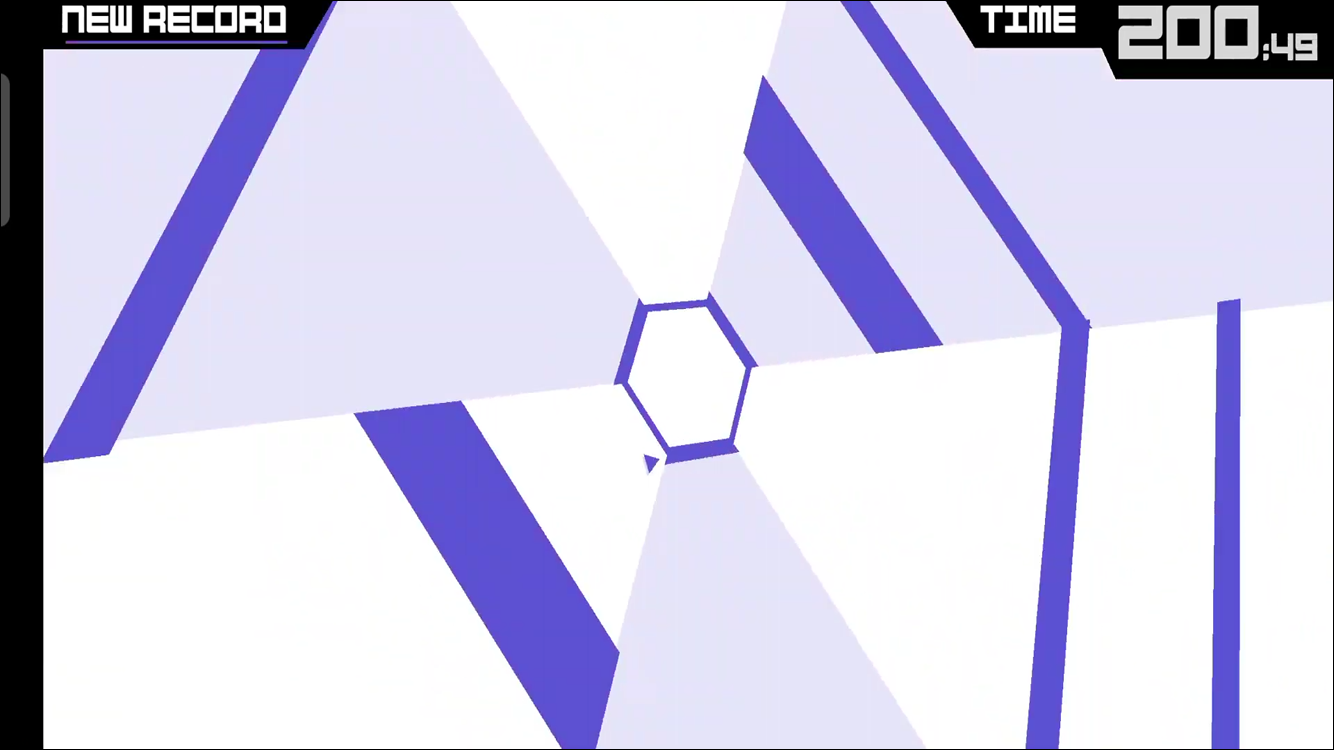
Super Hexagon, an independent game developed by VVVVVV director Terry Cavanagh, is infuriating, frustrating, and thrilling, making it the perfect game for both casual and dedicated gamers alike. Originally developed under the title at a game jam, Cavanagh liked the concept of the title enough to rework it into a harder, more fully-fleshed out game. The graphics between Hexagon and Super Hexagon didn’t change, but the underlying gameplay did, speeding up the entire gameplay, adding more game modes, and generally making things quite a bit more intense. Super Hexagon earned the genre of “twitch arcade” game, thanks to its incredible difficulty curve, quick restart features, and the blasting music that times you to the beat as you work your way throughout a level in the game. The premise of Super Hexagon is incredibly simple: you control a small triangle that moves in a circular formation around the center of the screen by tapping on the left and right sides of the display. As you move, large hexagonal shapes begin to close in on you, each with only one or two exit points to avoid being crushed by the line. You must rotate the triangle in the center on the display to avoid these obstacles while simultaneously trying to look ahead to see what’s going to happen next on your screen. Oh, and this is all happening while loud, thumping chiptune beats blast in your ear and the stage continues to get louder, strobing different colors throughout your gameplay in the stage. The first time you play Super Hexagon, you’ll likely make it five seconds or less. Your second run won’t fare much better, and even the tenth round will feel short. Over the hours that begin to drag on in the game, however, you’ll find yourself learning patterns, squeezing in and out of gaps you never thought were possible, timing your runs to difficult circular barriers, and eventually hitting a high score that manages to hit over a minute in time. 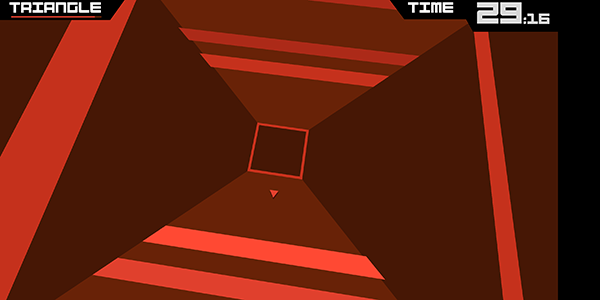 Once you think you’ve gotten a hang of Super Hexagon, the real challenge is revealed. The game starts on hard mode, before unveiling harder and hardest modes to battle out against. These stages start faster than you ever could think possible, increasing in speed as you run through the level. Eventually, beating each of these levels unlocks even higher stages of difficult, labeled Hyper stages, that increase the speed to unfathomable limits. Everything in this game, from the soundtrack to the strobing lights and shaking stages, is designed to distract and destroy you, and it will only make you want to defeat the game more. If Flappy Bird broke you when it hit peak popularity back in 2014, you’ll likely find the world of Super Hexagon to be equally as thrilling and addictive.
Once you think you’ve gotten a hang of Super Hexagon, the real challenge is revealed. The game starts on hard mode, before unveiling harder and hardest modes to battle out against. These stages start faster than you ever could think possible, increasing in speed as you run through the level. Eventually, beating each of these levels unlocks even higher stages of difficult, labeled Hyper stages, that increase the speed to unfathomable limits. Everything in this game, from the soundtrack to the strobing lights and shaking stages, is designed to distract and destroy you, and it will only make you want to defeat the game more. If Flappy Bird broke you when it hit peak popularity back in 2014, you’ll likely find the world of Super Hexagon to be equally as thrilling and addictive.
Compatible With




It’s unfortunate that most readers’ experiences with Threes doesn’t come from the game at all. Instead, you probably found yourself playing the knockoff title 2048 back in 2014, unaware the game was aping off the hard work of developers that had poured eighteen months into developing a new kind of puzzle game for mobile before the idea was stolen to massive popular appeal just a month after Threes had launched on the market. Putting that history aside, it’s important to note that Threes has a completely different algorithm powering the game than 2048, making it both more challenging and more creative. If you have played 2048 before, the first thing you’ll likely notice is the amount of work put into the original game. Threes went through dozens of prototypes before it launched in February 2014, and it shows. Every animation is buttery-smooth, every design seems handmade. Unlike the cold, sterile world of 2048, Threes has a fun, whimsical design element that makes it obvious some real hard work and craft went into the game. From the obvious faces along the bottom of the cards to the winning animations, Threes has a sense of joy that you don’t see often in mobile games. The artwork comes from Greg Wohlwend who previously worked on Ridiculous Fishing, another fantastic mobile game with some incredible art to back it up. He’d later go onto work on TumbleSeed, an indie-action game for the PC, Playstation 4, and Nintendo Switch. The developer, meanwhile, was Asher Vollmer, who worked on iOS-exclusive Puzzlejuice. 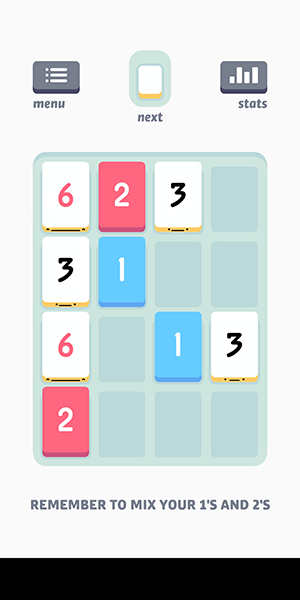 Beyond the design and programming, you’re likely to find the game to play similar to 2048. You slide numbered tiles together on a 4×4 grid, combining numbers to create multiples of three. Unlike 2048, which is relatively easy to beat if you’re paying attention to the patterns throughout the game, Threes plays up to 12,288, which earns you a high score and beats the game with a slick animation. It took over three years for a typical player to beat Threes in this fashion (though there are some reports it was done earlier and simply not reported on), but it grants a level of depth that obviously isn’t there when comparing the title to 2048. In 2015, over a year after the launch of Threes and 2048, Threes began offering a free version that allows a certain number of plays before an ad must be watched. We recommend dropping the $2.99 on the paid version; however, you’ll get hours of entertainment out of this cute sliding card game.
Beyond the design and programming, you’re likely to find the game to play similar to 2048. You slide numbered tiles together on a 4×4 grid, combining numbers to create multiples of three. Unlike 2048, which is relatively easy to beat if you’re paying attention to the patterns throughout the game, Threes plays up to 12,288, which earns you a high score and beats the game with a slick animation. It took over three years for a typical player to beat Threes in this fashion (though there are some reports it was done earlier and simply not reported on), but it grants a level of depth that obviously isn’t there when comparing the title to 2048. In 2015, over a year after the launch of Threes and 2048, Threes began offering a free version that allows a certain number of plays before an ad must be watched. We recommend dropping the $2.99 on the paid version; however, you’ll get hours of entertainment out of this cute sliding card game.
Compatible With




No, Unblock Me isn’t a game about social networks and trying to stalk your ex or unfollow your high school bullies—though that would be a pretty cool game, in the style of Lifeline mentioned above. Instead, Unblock Me is the classic sliding block puzzle game, seen on so many platform,, and in so many forms over the years, you’ve likely played at least one rendition of the game. If you’re a fan of puzzle games, you’ll find something to like here. And even if the gameplay is a bit simple, there are over 16,000 puzzles that would keep you entertained. If you’ve never played a game like Unblock Me before, the goal is simple. Your field is a small grid, filled with blocks and empty spaces. One block is a different block than the rest, though the size of the blocks is typically very similar with each other. Your goal is to slide the blocks around until you can get your specific block from its starting location to a predetermined exit zone at the end of the level. When the level concludes, the game loads a new level, typically increasing in difficulty as you move throughout the game. All told, there isn’t a ton of complexity to the game—though some puzzles can get very intense, there’s nothing too impossible to solve, and learning how the game works are easy before the difficult curve kicks in. 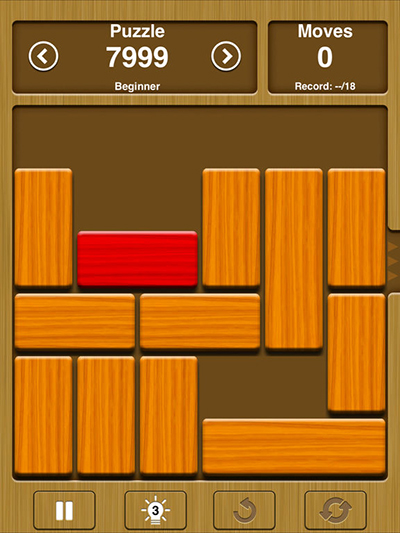 There are a ton of these varieties of games on both Android and iOS, but Unblock Me has over 16,000 puzzles contained inside, making it a perfect time waster while waiting in line or on a long car ride through the middle of nowhere. The iOS version does cost .99 cents without ads, while the Android version is free but with ads and in-app purchases included (most of the in-app purchases seem to be “hint packs,” which are entirely optional downloads). Overall, if you’re a puzzle fan, we think you’ll really love what’s in Unblock Me. The game’s perfect for both long sessions and quick levels.
There are a ton of these varieties of games on both Android and iOS, but Unblock Me has over 16,000 puzzles contained inside, making it a perfect time waster while waiting in line or on a long car ride through the middle of nowhere. The iOS version does cost .99 cents without ads, while the Android version is free but with ads and in-app purchases included (most of the in-app purchases seem to be “hint packs,” which are entirely optional downloads). Overall, if you’re a puzzle fan, we think you’ll really love what’s in Unblock Me. The game’s perfect for both long sessions and quick levels.
Compatible With
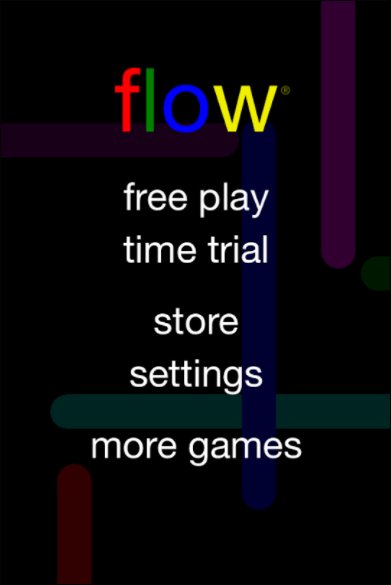
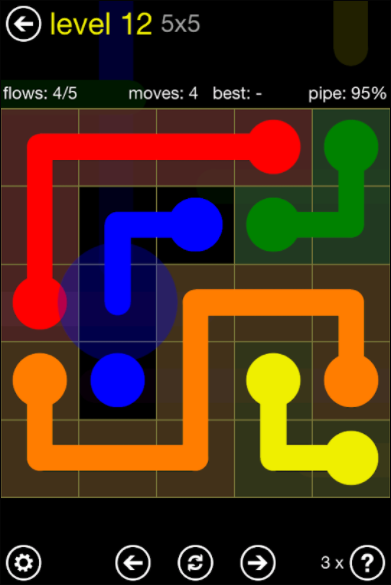
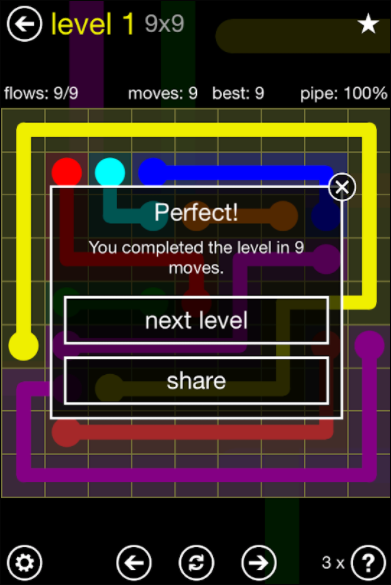
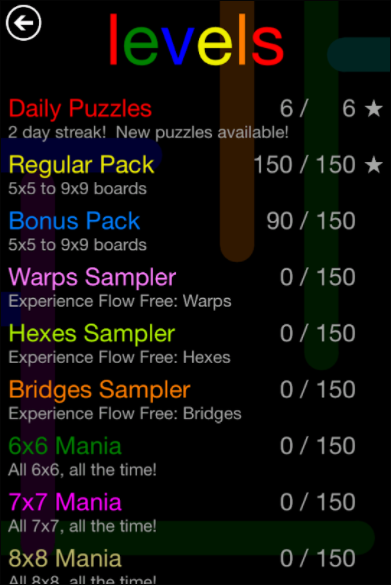
Easy to grasp yet hard to master, Flow Free is an addictive puzzle game that will have you coming back again and again while trying to crack that next puzzle. The goal of the game is simple. On your display, you’ll find two nodes of a matching color that have to be connected to clear the level. Each set of nodes have to be connected, and every square on the grid has to be covered to complete the level, all without crossing or overlapping lines along the way. 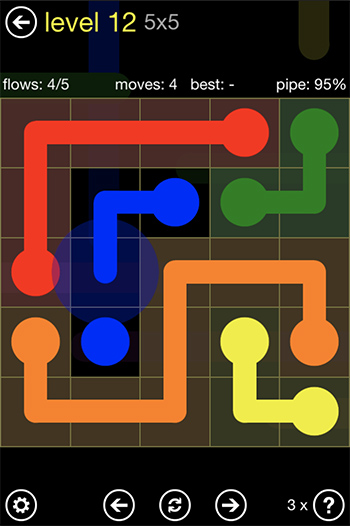 From that basic set of rules comes a game that can be either challenging and hyper-fast or slow and cerebral depending on your taste. You can choose between free play, allowing you all the time you want, or time trials where you have only seconds to intuit the solution to puzzles that range from simple to brutally difficult. There are more than 2,500 free puzzles and a variety of add-on packs you can use to get more puzzle action. The graphics and sound are simple but delightful, and the game plays perfectly offline. With no violent imagery or themes, the game is ideal for all ages.
From that basic set of rules comes a game that can be either challenging and hyper-fast or slow and cerebral depending on your taste. You can choose between free play, allowing you all the time you want, or time trials where you have only seconds to intuit the solution to puzzles that range from simple to brutally difficult. There are more than 2,500 free puzzles and a variety of add-on packs you can use to get more puzzle action. The graphics and sound are simple but delightful, and the game plays perfectly offline. With no violent imagery or themes, the game is ideal for all ages.
Compatible With




Hang Line is a quick, fun, and simple puzzle-platformer designed around one of the best tools in modern gaming: a grappling hook. Anyone who’s played Just Cause knows that a grappling hook in a video game is always good news, with games like Sekiro: Shadows Die Twice adopting the tool to a period piece and Marvel’s Spider-Man using a similar tool with Spidey’s web shots. Obviously, the differences between a free-to-play mobile game and a AAA video game title are incredibly different, but it’s the same sense of kinetic movement that make Hang Line fun to play.  The game is simple enough. You play a character equipped with a grappling hook, working to swing his way up icy mountain terrain in order to rescue survivors who lay stranded along with each level. The challenge is to do this all while avoiding natural disasters like rocks and falling avalanches. The game offers 50 levels over five different environments, along with endless modes that allow you to continue to swing for as long as you want through the game. With 90 characters and additional add-ons through gadgets like jetpacks and stasis fields, Hang Line is a great addition to your games folder.
The game is simple enough. You play a character equipped with a grappling hook, working to swing his way up icy mountain terrain in order to rescue survivors who lay stranded along with each level. The challenge is to do this all while avoiding natural disasters like rocks and falling avalanches. The game offers 50 levels over five different environments, along with endless modes that allow you to continue to swing for as long as you want through the game. With 90 characters and additional add-ons through gadgets like jetpacks and stasis fields, Hang Line is a great addition to your games folder.
Compatible With




Micro Vendor Adventures recreates the joy of playing games on a Gameboy Advance. This game allows you to control a small vending robot, moving soda cans around the levels to customers ordering soda. The game is fairly simple, with three buttons taking their places on the bottom of the screen as you move around each level, completing puzzles in order to properly move the can of soda.  The levels, especially early on, are fairly simple. However, if you fancy some challenge, the collectibles scattered around each level really make things more difficult, as you’ll have to think about each solution to getting all the coins scattered throughout each level. We do wish the controls were a bit more customizable, but as a puzzle-platformer, Micro Vender Adventures doesn’t reinvent the wheel, but it has a lot of fun along the way.
The levels, especially early on, are fairly simple. However, if you fancy some challenge, the collectibles scattered around each level really make things more difficult, as you’ll have to think about each solution to getting all the coins scattered throughout each level. We do wish the controls were a bit more customizable, but as a puzzle-platformer, Micro Vender Adventures doesn’t reinvent the wheel, but it has a lot of fun along the way.
Compatible With


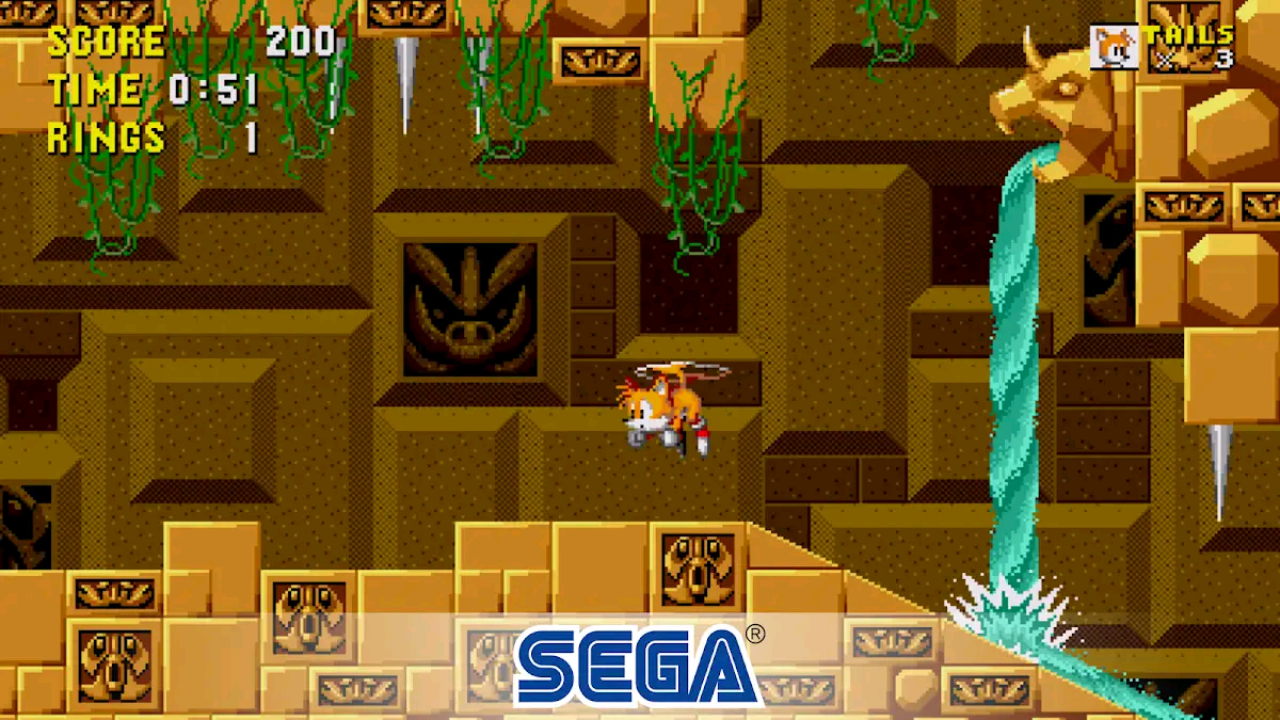

Retro gamers are surely familiar with Sonic—the classic hedgehog who races for the rings and whose series of games pretty much invented the modern video game franchise. The Sonic game that first dazzled the youth of many nations is free to play and freshly optimized for smartphones and tablets! You can race through seven perilous game zones as Sonic the Hedgehog, running and spinning through all kinds of hazards to collect rings and save the world! Note* In order for Sonic to work offline you must pay for the non-ad version. Due to ads support, the game will not work with the free version (because the ads can’t play without the internet). 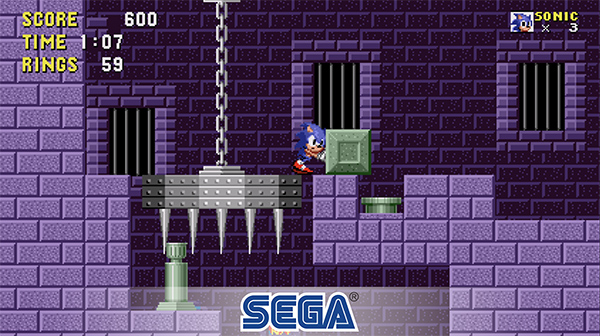 Sonic Classic has been genuinely optimized for mobile, and plays in widescreen mode at 60 FPS, giving you an experience that’s even smoother than the original game. The game’s classic soundtrack is fully-remastered, providing an amazing nostalgic experience. New game modes like Time Attack add to the difficulty, and there are new playable characters like Tails and Knuckles. These characters have unique powers to fly, climb, or glide around the different levels, letting you play the game in a whole new way. The game is supported by ads, but a quick in-app purchase allows you to disable them during play.
Sonic Classic has been genuinely optimized for mobile, and plays in widescreen mode at 60 FPS, giving you an experience that’s even smoother than the original game. The game’s classic soundtrack is fully-remastered, providing an amazing nostalgic experience. New game modes like Time Attack add to the difficulty, and there are new playable characters like Tails and Knuckles. These characters have unique powers to fly, climb, or glide around the different levels, letting you play the game in a whole new way. The game is supported by ads, but a quick in-app purchase allows you to disable them during play.
Compatible With




It’s not often that modern console games are ported to mobile devices, but when it does happen, it’s always worth checking out. Battle Chasers: Nightwar is no different, and it’s exciting to see a game as fantastic as this one makes its way to Android at a reasonable cost. Anyone who followed indie comics in the 1990s will immediately be familiar with the characters of Battle Chasers. This is very much set in the same universe as Joe Madureira’s comic, and Garrison, Gully, Calibreto, and Knolan all make appearances. Like many RPGs from the SNES-era it draws from, the game plot is a bit shallow, but there’s enough there to keep you rolling through combat and dungeon exploration. Battle Chasers combines the gameplay of two unique genres into one slick package. From moving around the world map to exploring dungeons and other levels, you’ll find yourself in an isometric landscape. On the world map, you’ll encounter stationary enemies as you move from area to area, while dungeons contain enemies that can move around the world. Each dungeon is reminiscent of something like Diablo, with hidden secrets and loot around each corner. You move a single character around the stage at each time, but swapping between characters allows you to access their special abilities as you move.  Meanwhile, the battle system in Battle Chasers is standard JRPG turn-based fare. You control up to three characters as they attack, defend, and heal, while up to three enemies attack you from the opposite side of the arena. Each character has basic attacks, along with abilities that require a certain amount of magic or health to use. As you level up, you gain new abilities and increase your stats. It’s all very standard JRPG fare, but it’s one of the best implementations from this style of gameplay in a long time. The battle system also makes use of a unique mechanic, known as “overcharge,” which is generated by using standard attacks. Overcharge grants you additional magic usage, which means you’ll need to balance your normal attacks with your magic abilities to keep your fighters going. Though originally for consoles and PC, Battle Chasers looks absolutely stunning on mobile devices. There are sliders available in the settings menu that allow you to adjust the graphics on your phone, but if anything, you’ll have to bring them down, not up. Even a Pixel 2 XL, a device that came out less than two years ago, is barely able to qualify as hardware capable of running the game. Without much in the way of serious real-time action, Battle Chasers shines on touchscreen devices. The virtual controls are good-enough for moving through the world However, when it comes to battle, selecting your moves or items just feels right. Battle Chasers might not be able to satisfy the needs of every gamer, but for those looking to capture the feel of old-school JRPGs while heading in a new direction in terms of world-building, art, style, and exploration.
Meanwhile, the battle system in Battle Chasers is standard JRPG turn-based fare. You control up to three characters as they attack, defend, and heal, while up to three enemies attack you from the opposite side of the arena. Each character has basic attacks, along with abilities that require a certain amount of magic or health to use. As you level up, you gain new abilities and increase your stats. It’s all very standard JRPG fare, but it’s one of the best implementations from this style of gameplay in a long time. The battle system also makes use of a unique mechanic, known as “overcharge,” which is generated by using standard attacks. Overcharge grants you additional magic usage, which means you’ll need to balance your normal attacks with your magic abilities to keep your fighters going. Though originally for consoles and PC, Battle Chasers looks absolutely stunning on mobile devices. There are sliders available in the settings menu that allow you to adjust the graphics on your phone, but if anything, you’ll have to bring them down, not up. Even a Pixel 2 XL, a device that came out less than two years ago, is barely able to qualify as hardware capable of running the game. Without much in the way of serious real-time action, Battle Chasers shines on touchscreen devices. The virtual controls are good-enough for moving through the world However, when it comes to battle, selecting your moves or items just feels right. Battle Chasers might not be able to satisfy the needs of every gamer, but for those looking to capture the feel of old-school JRPGs while heading in a new direction in terms of world-building, art, style, and exploration.
If you don’t see an app that should be here, let us know what it is